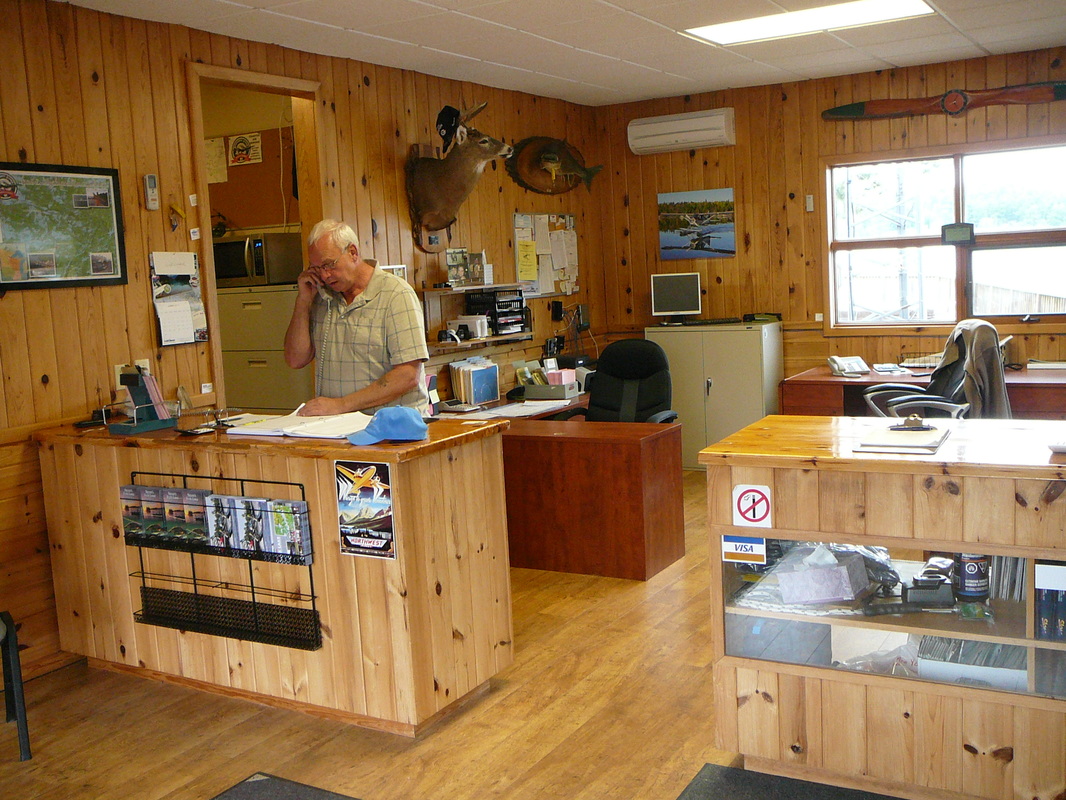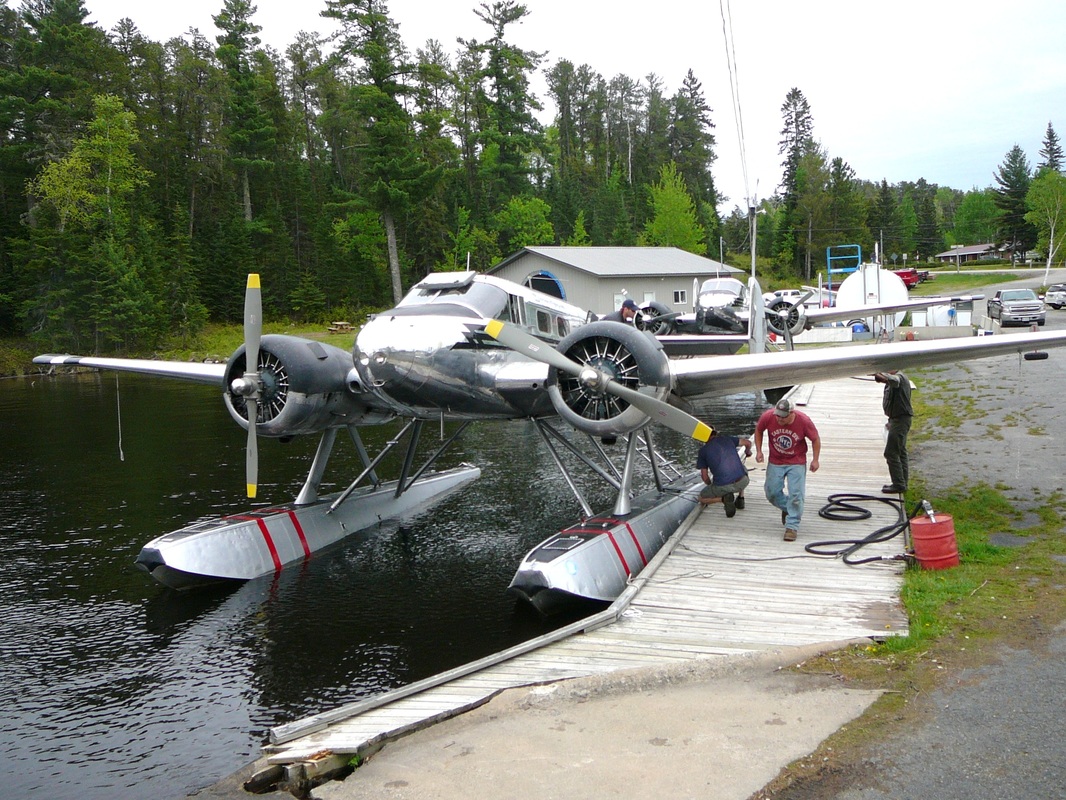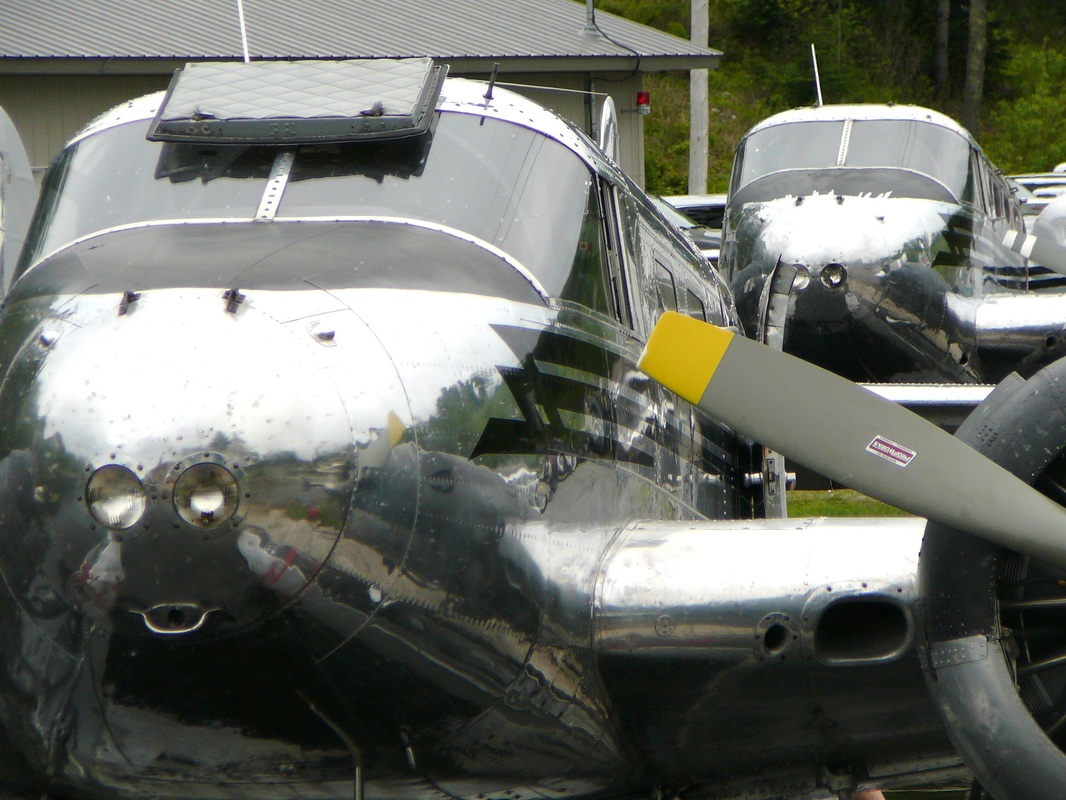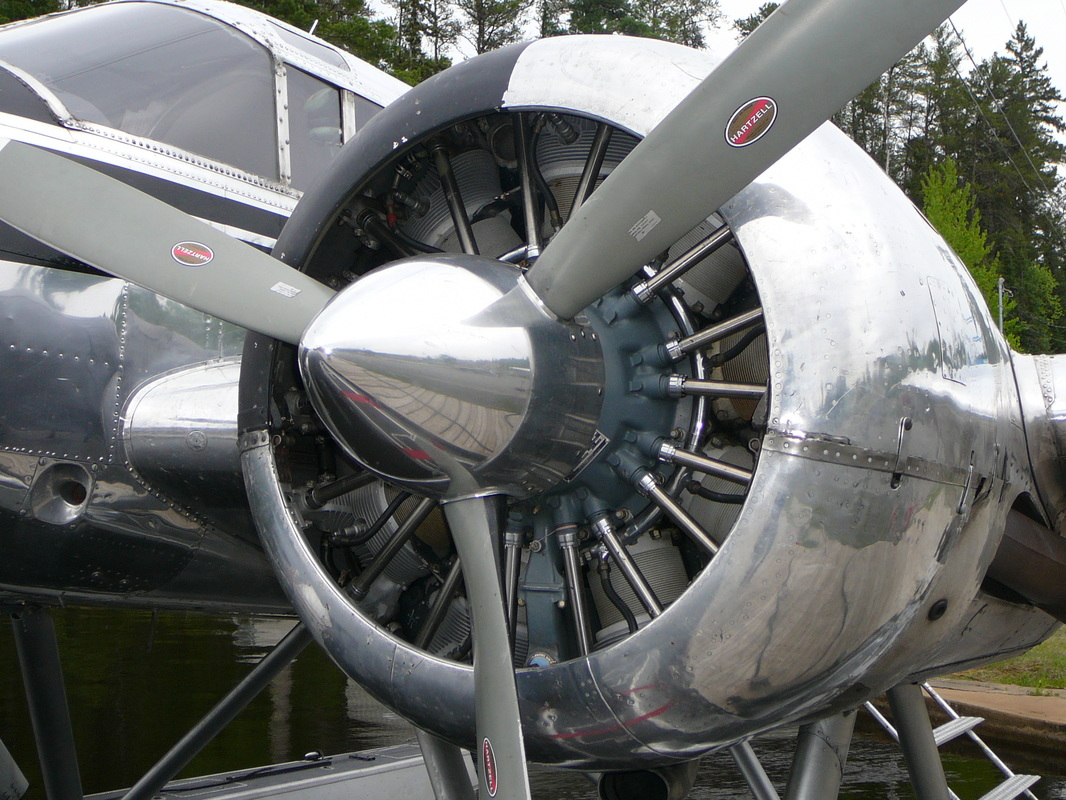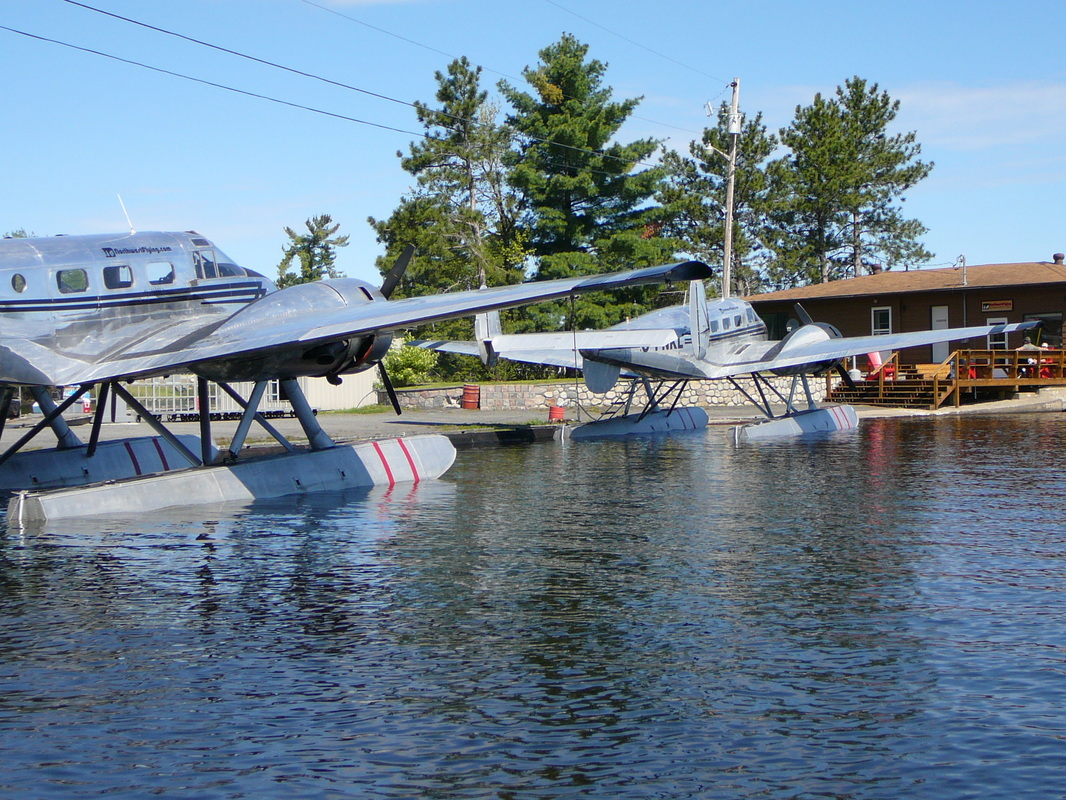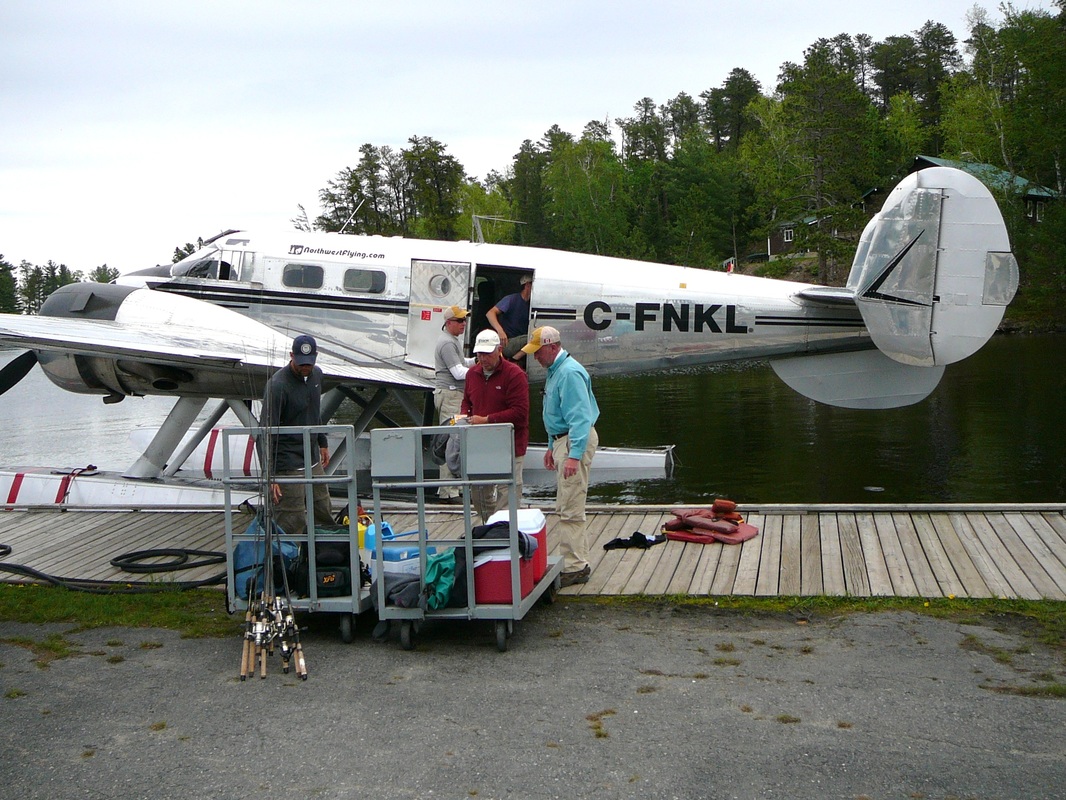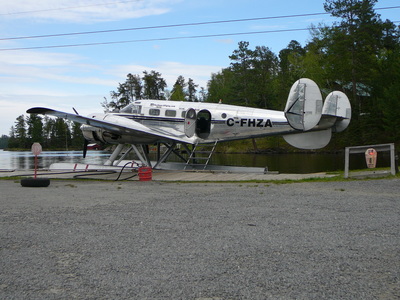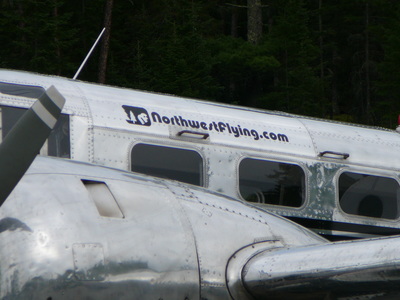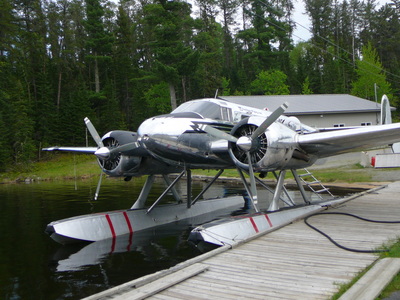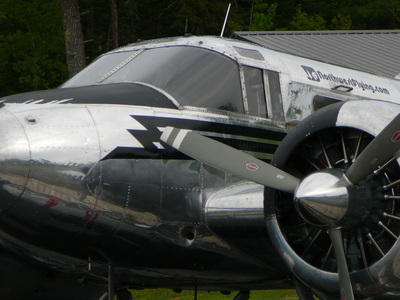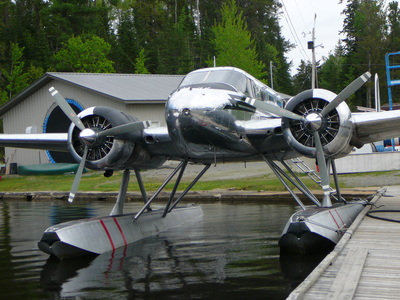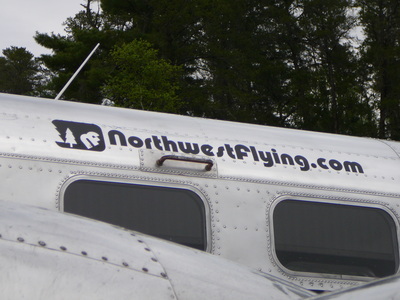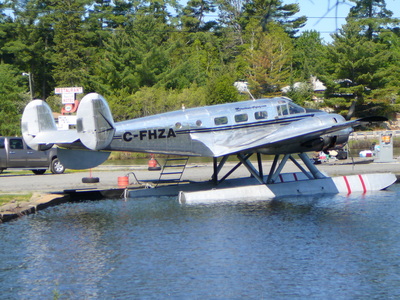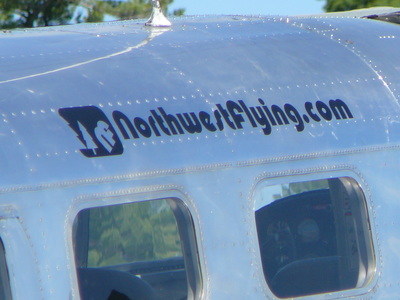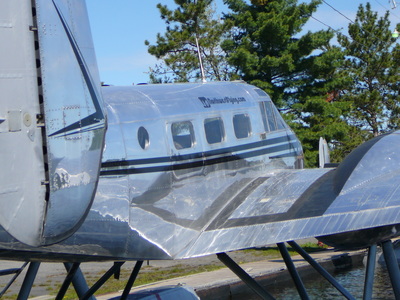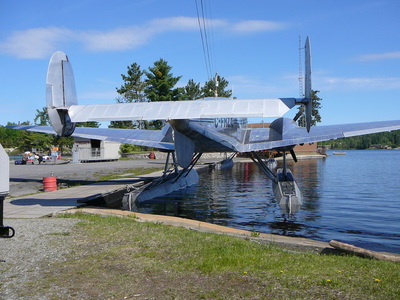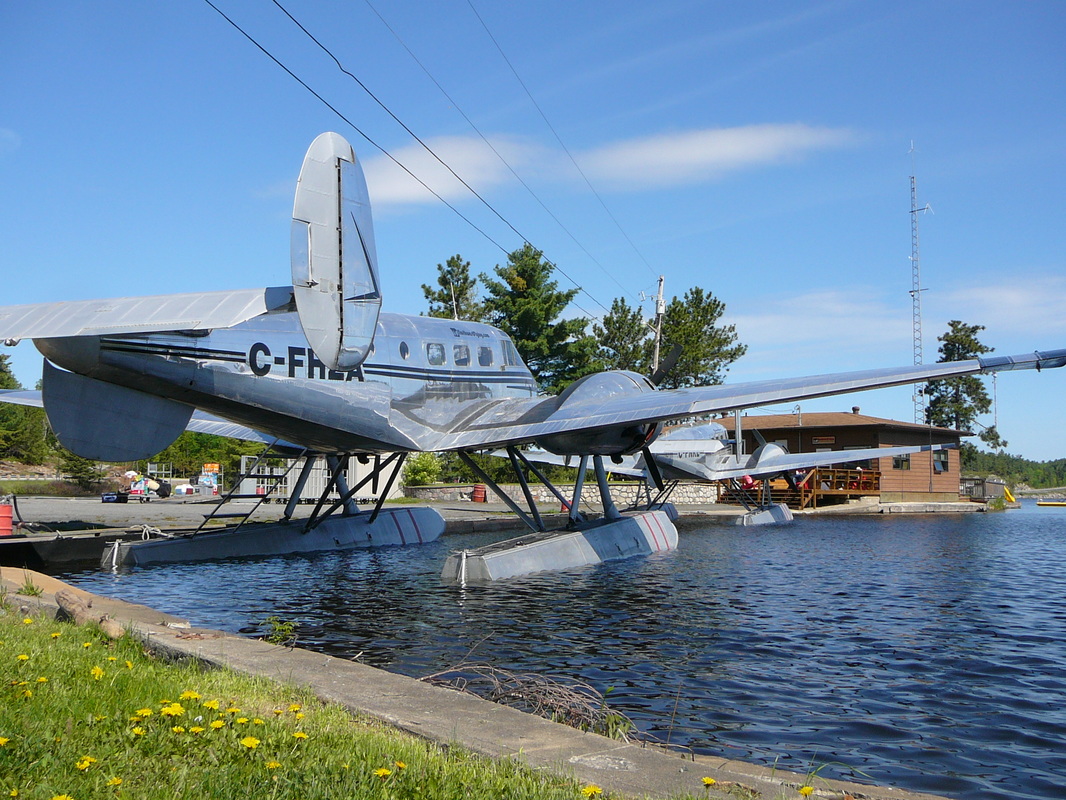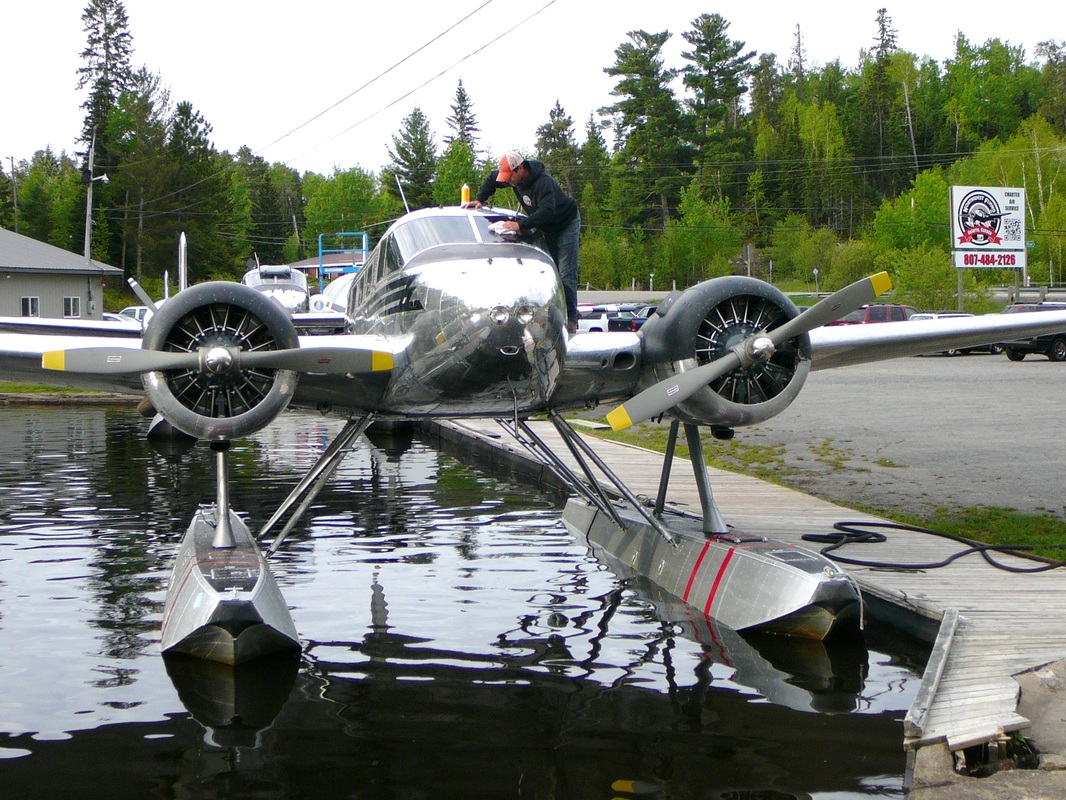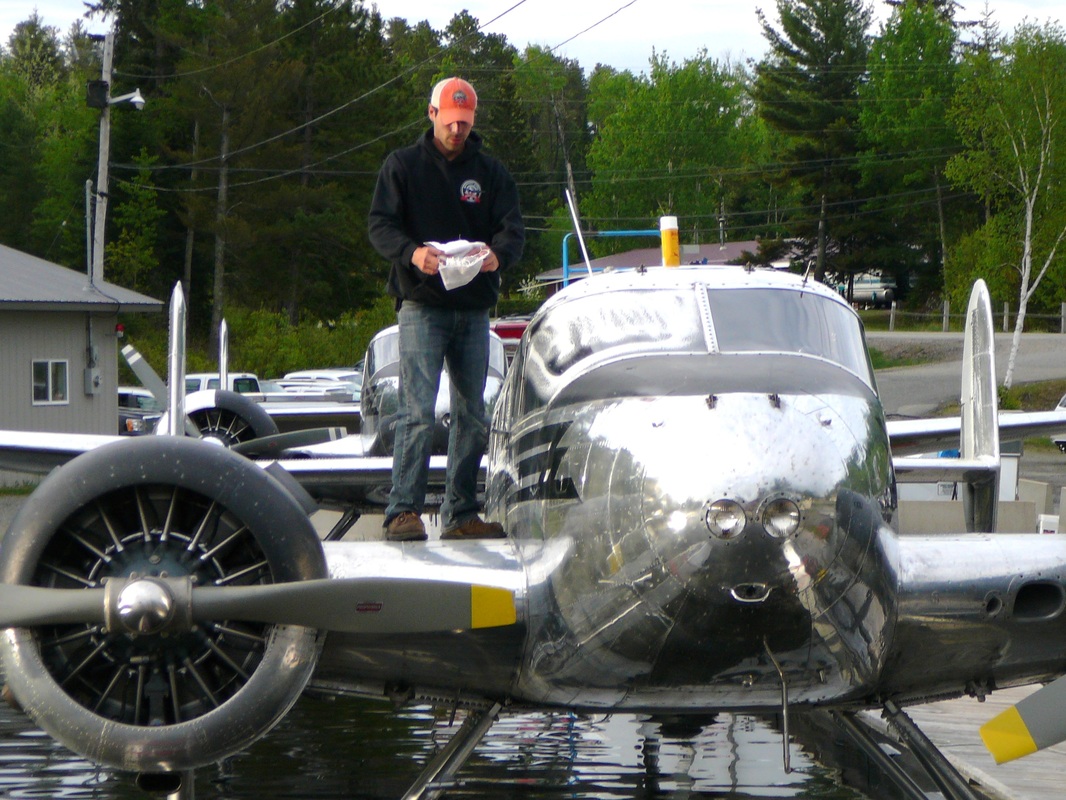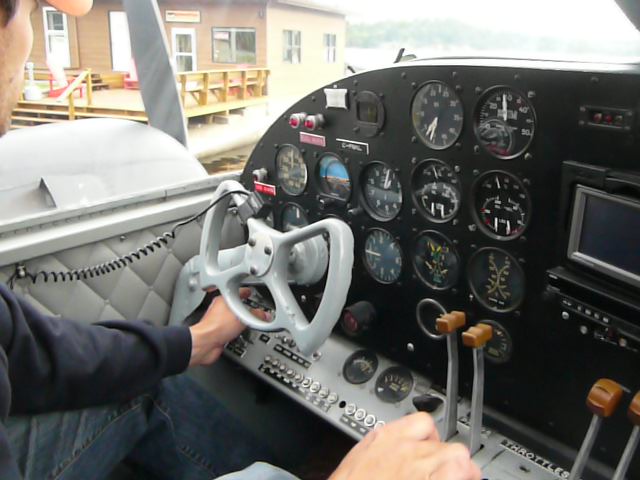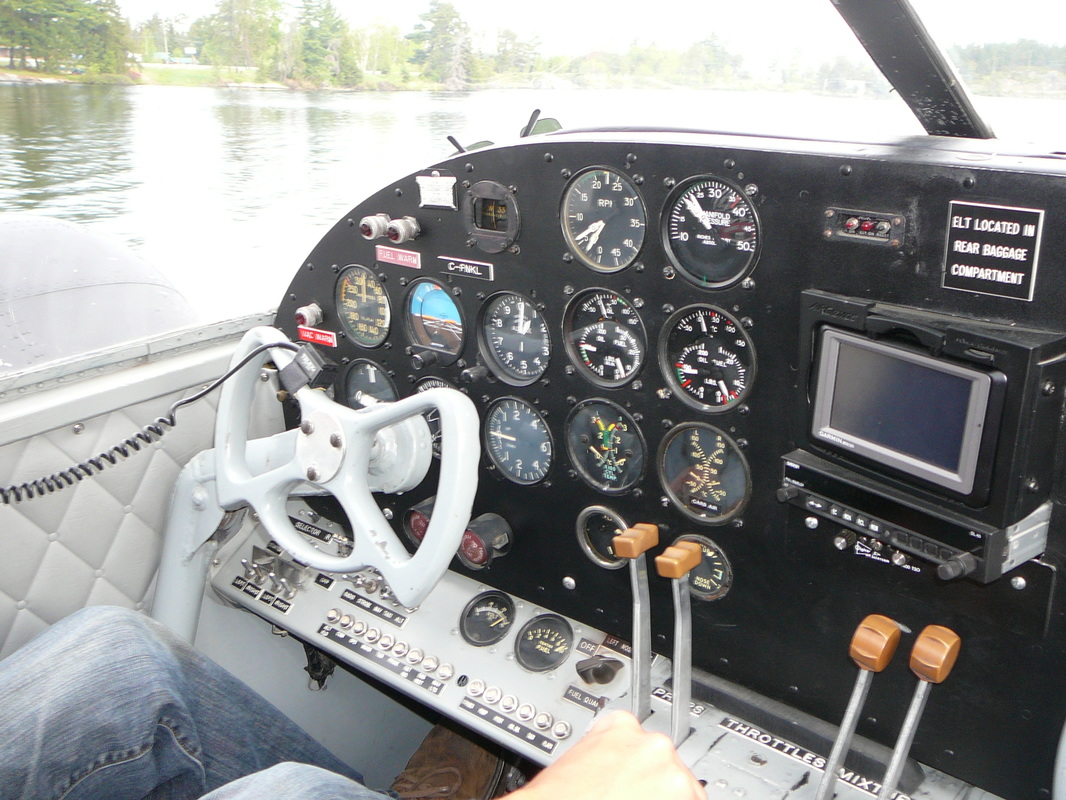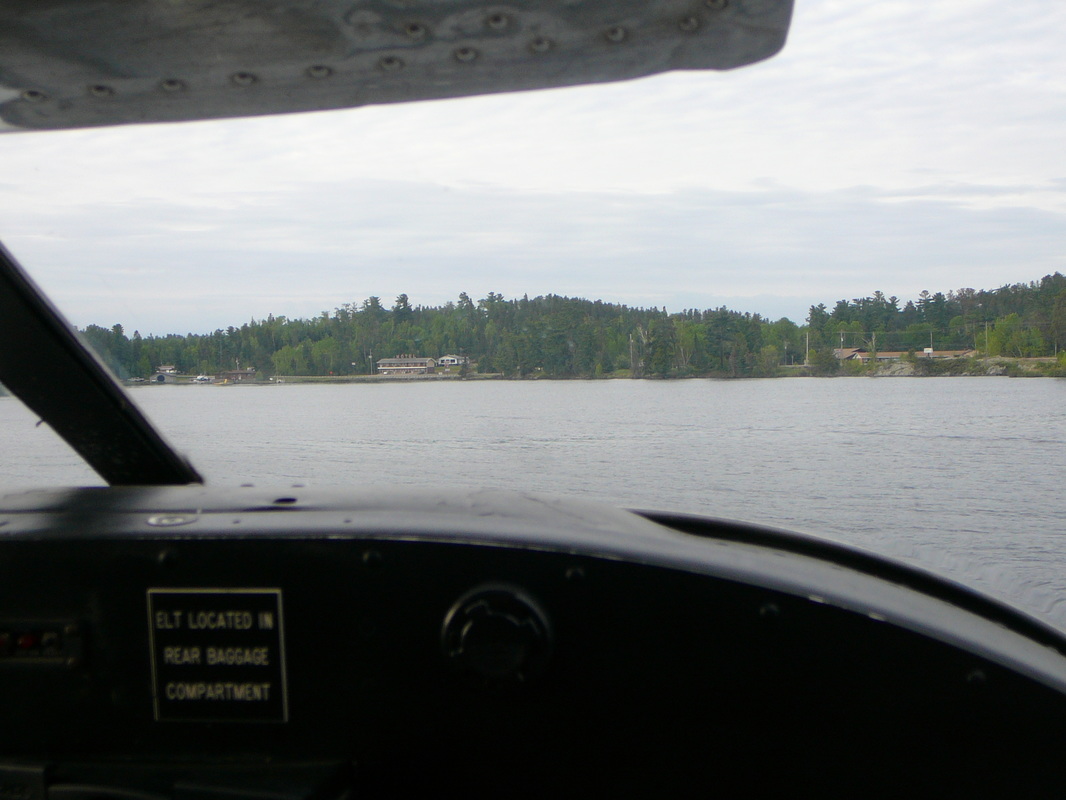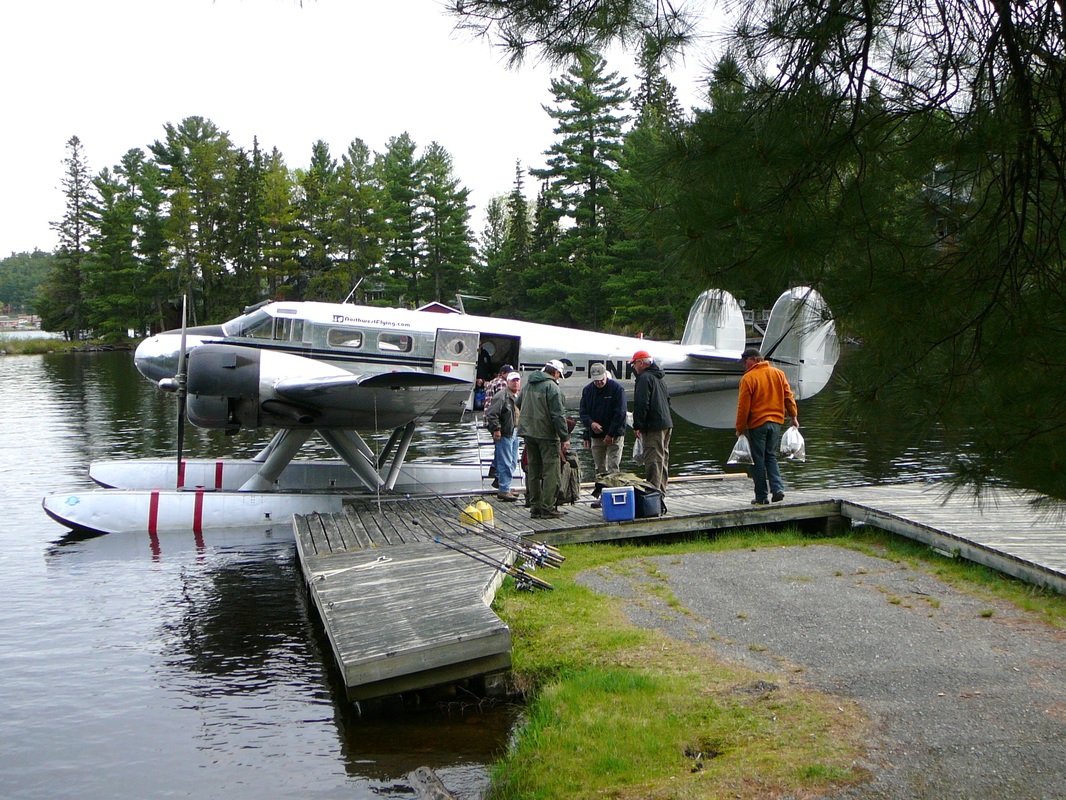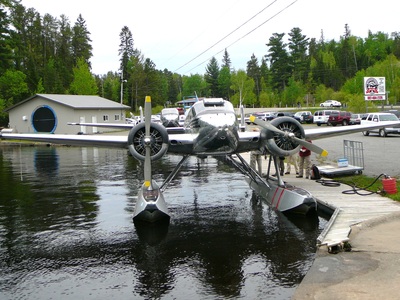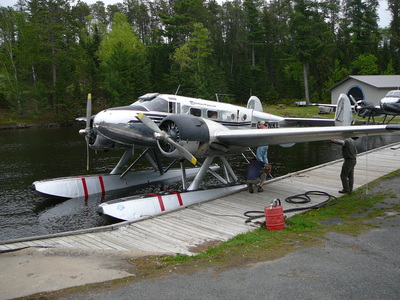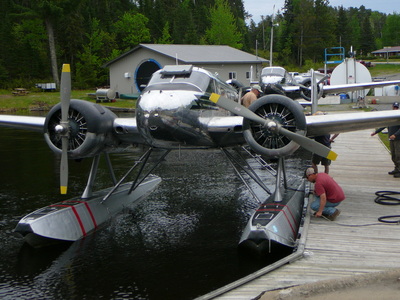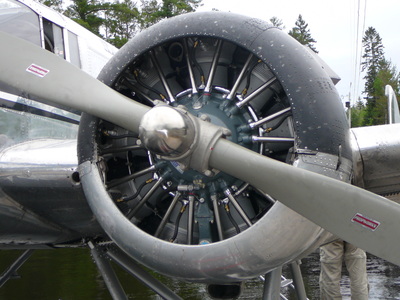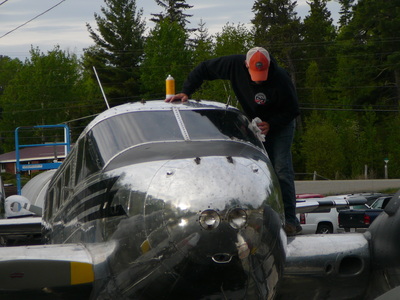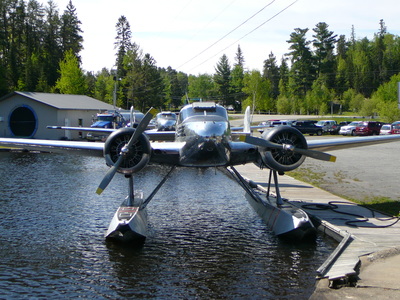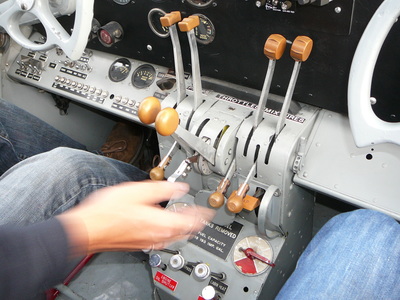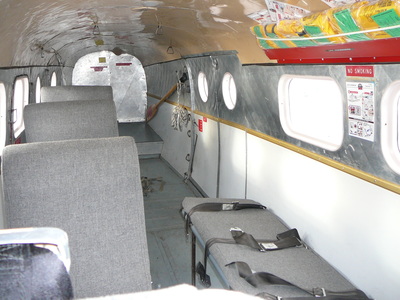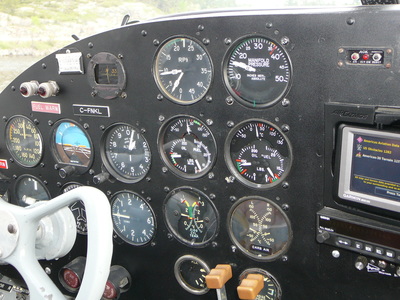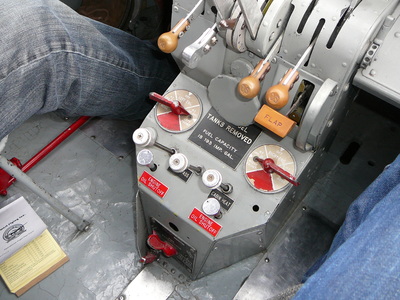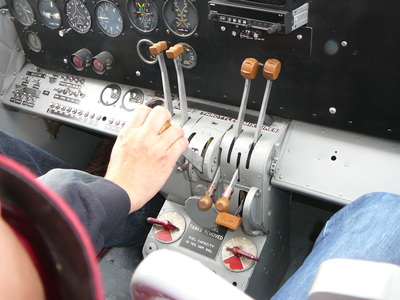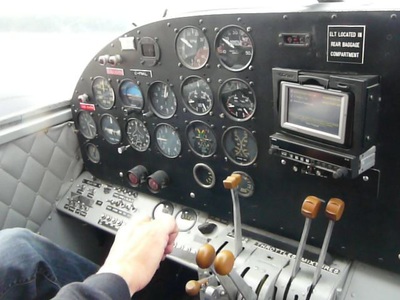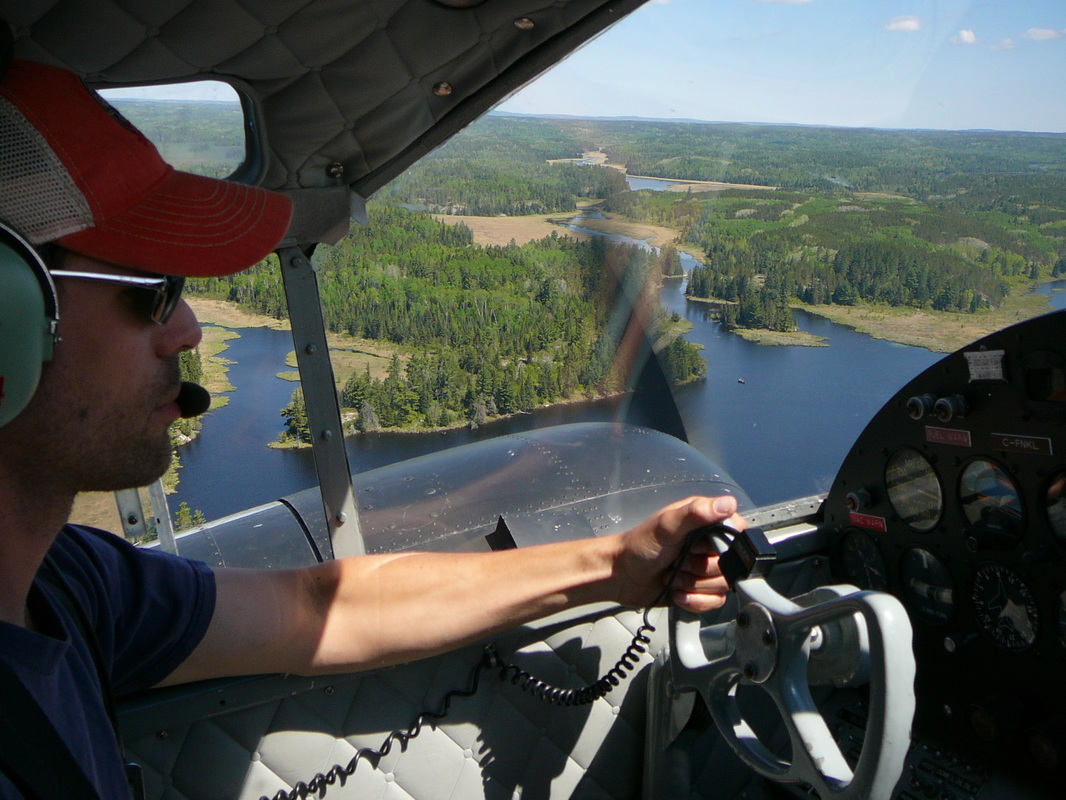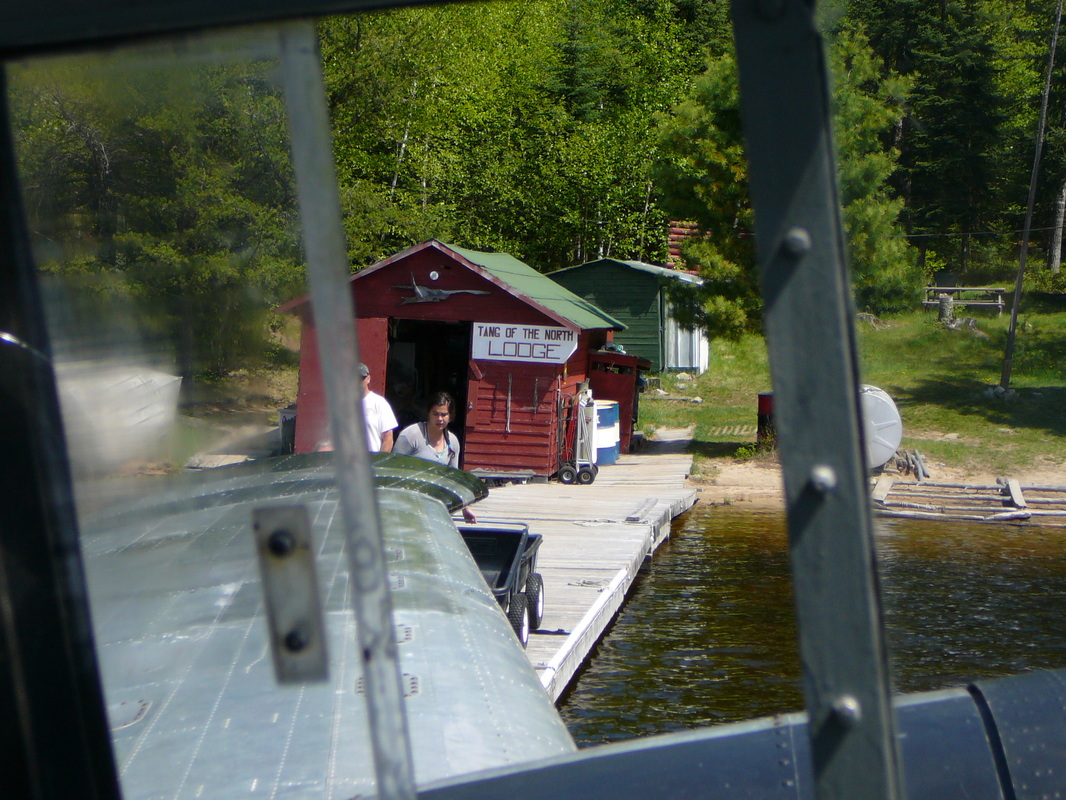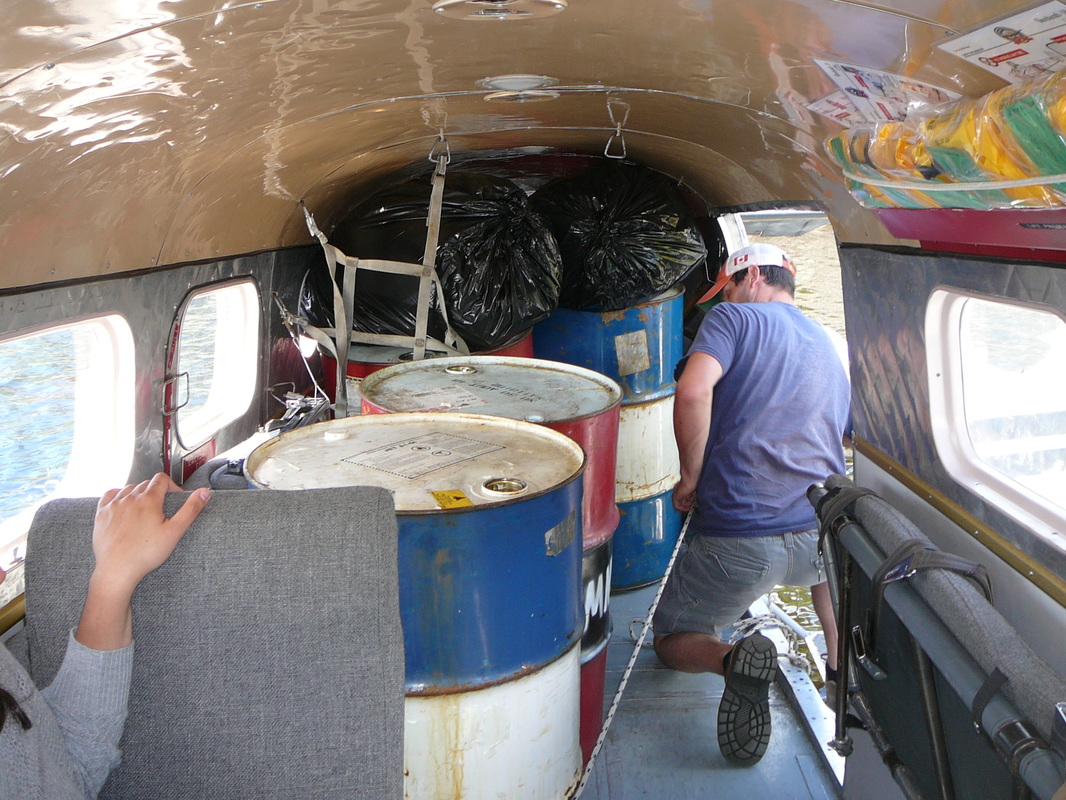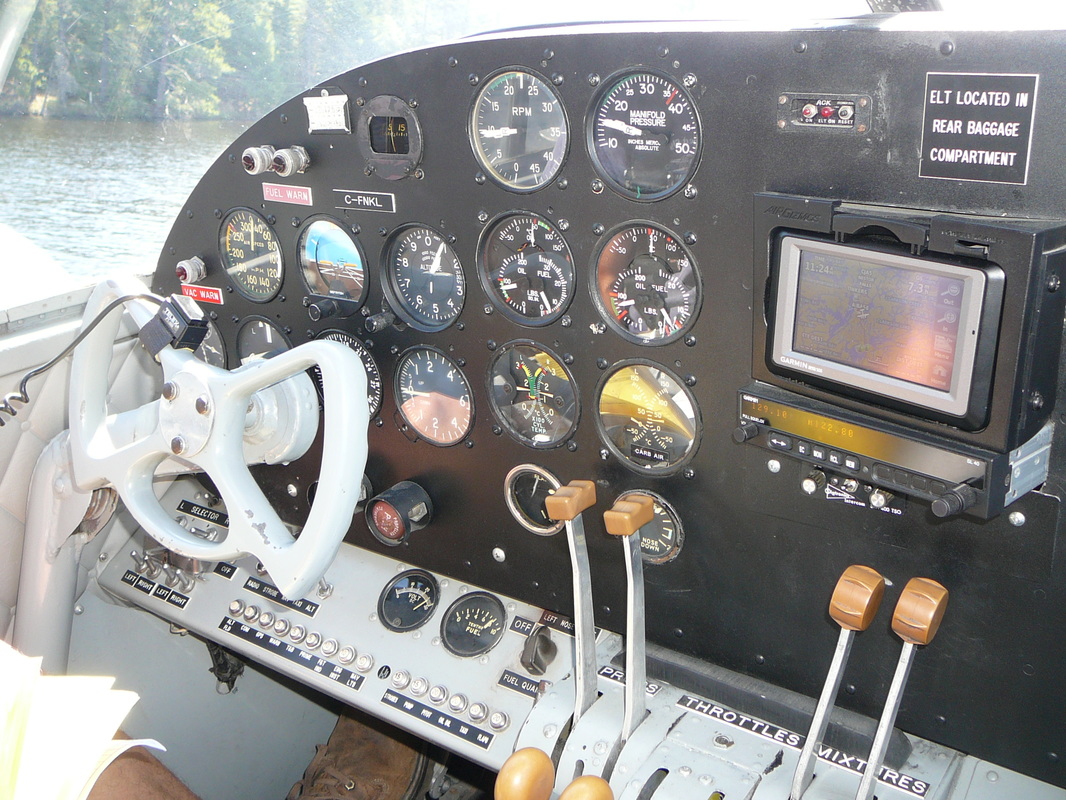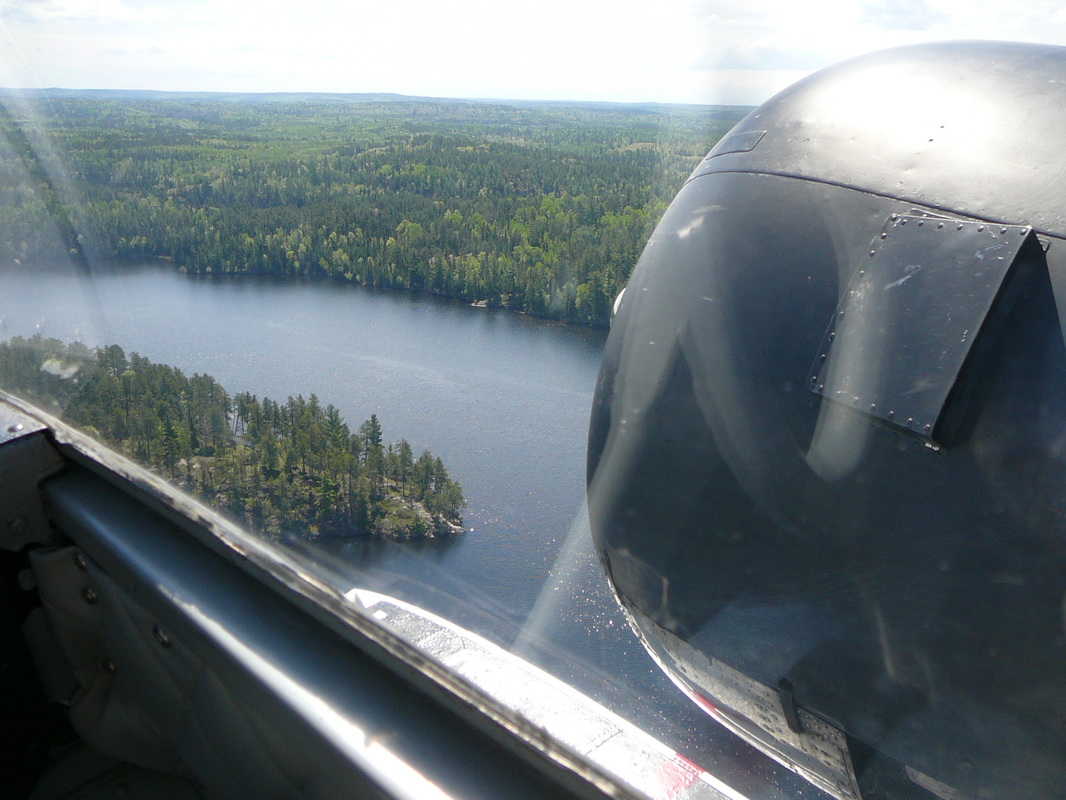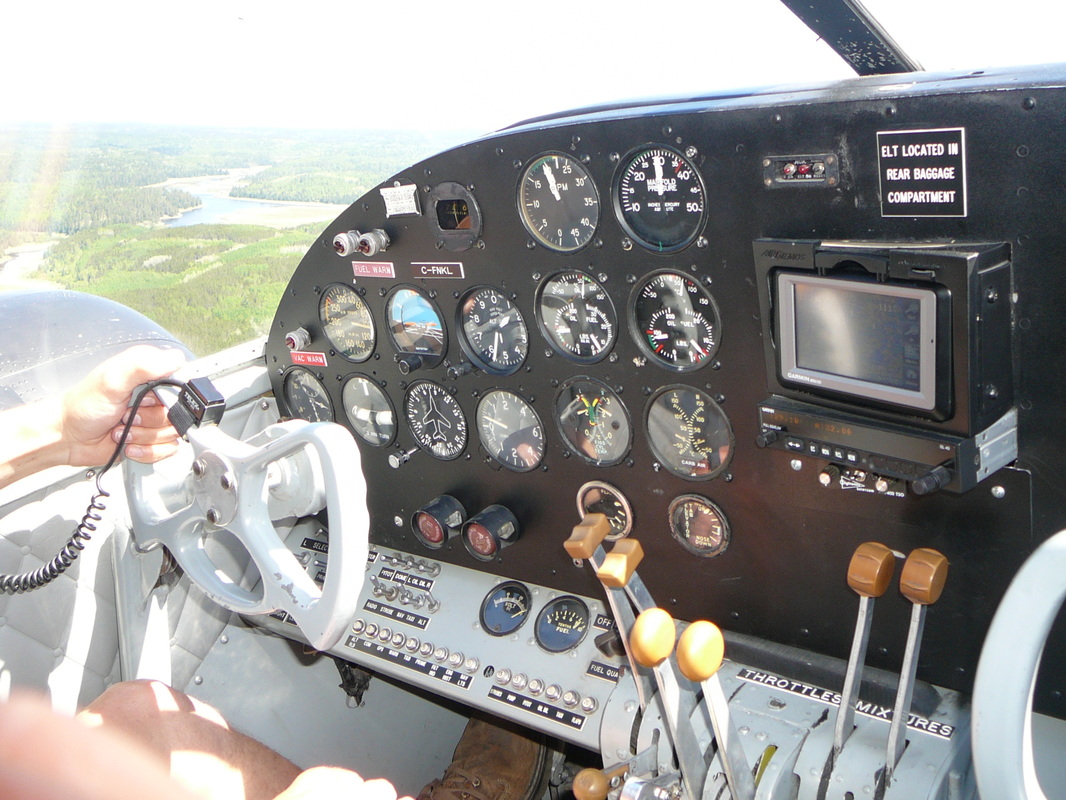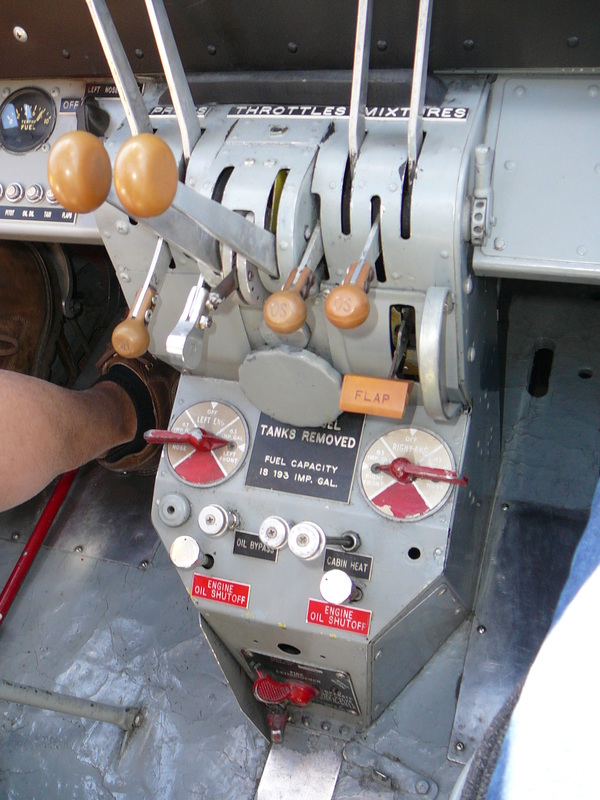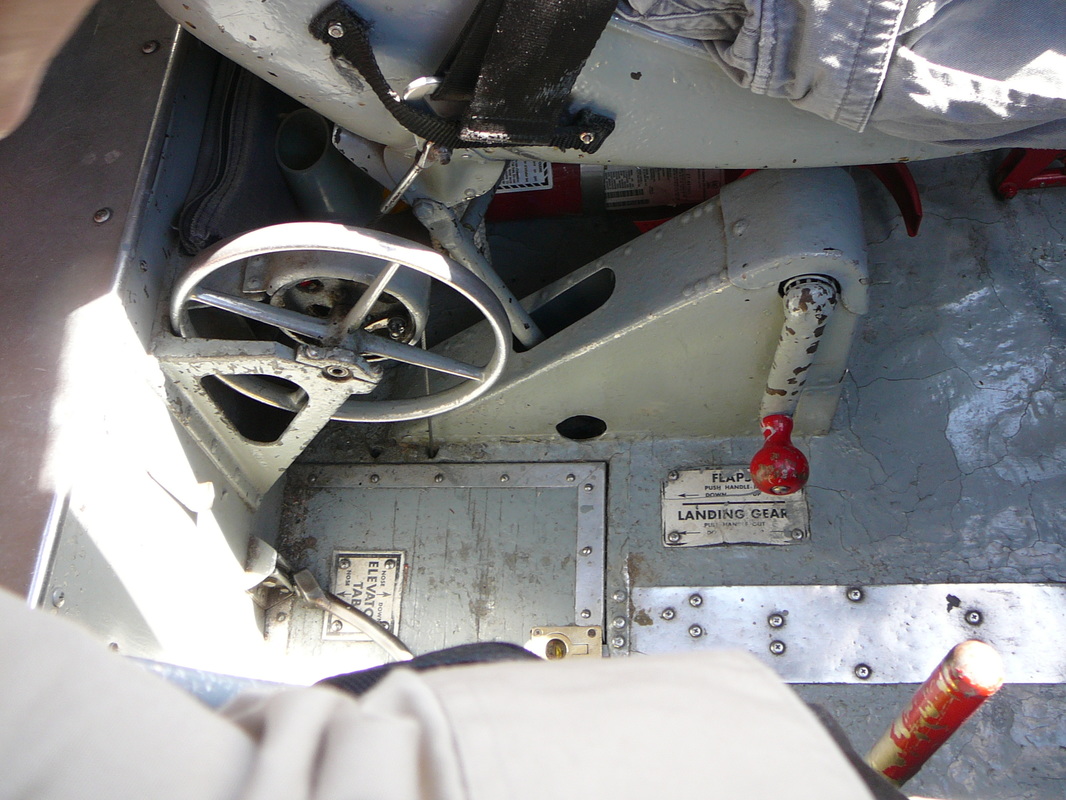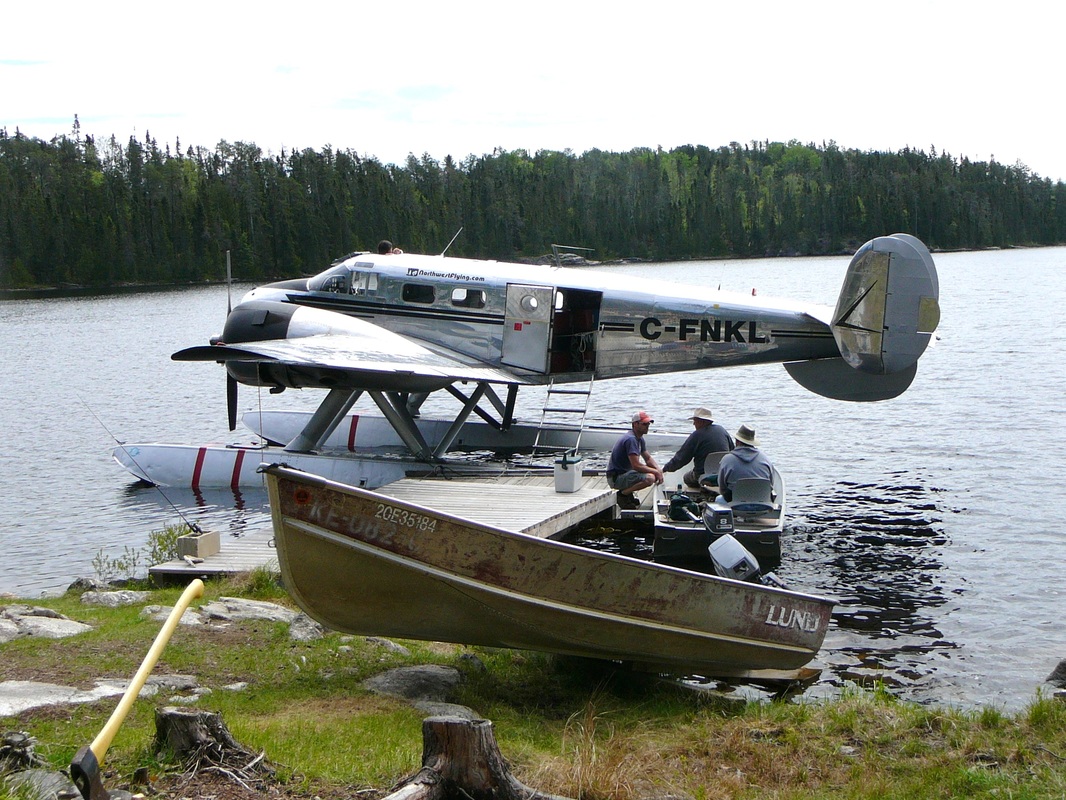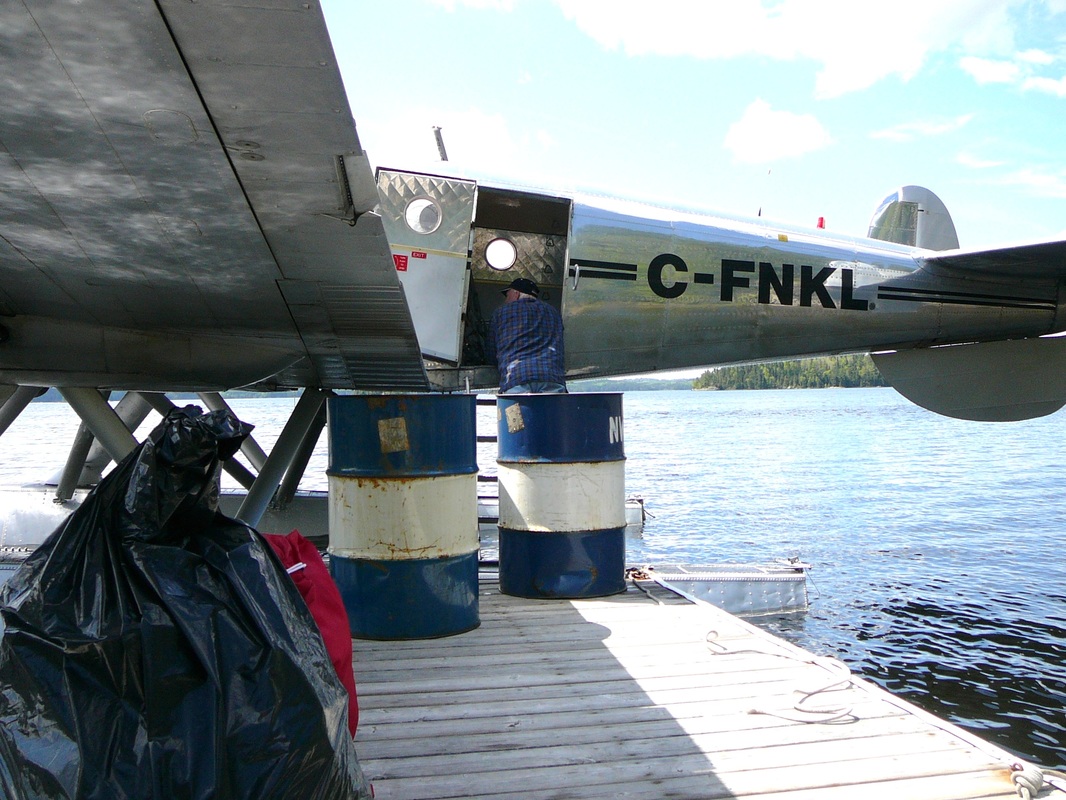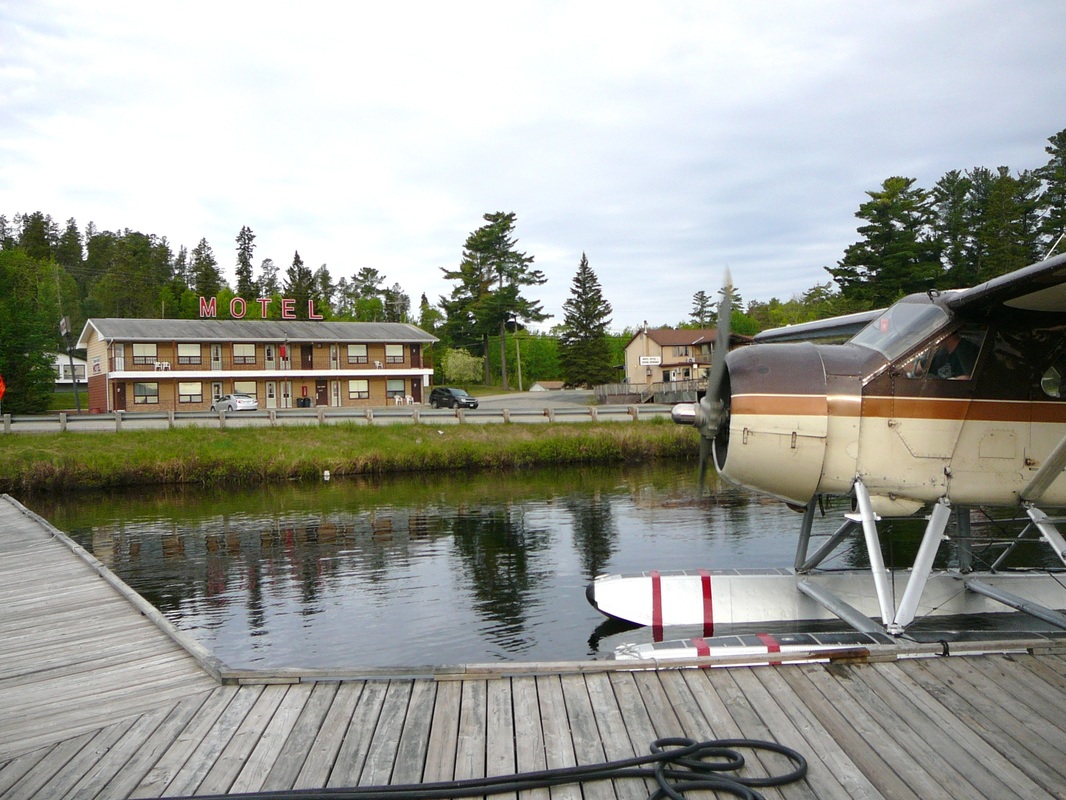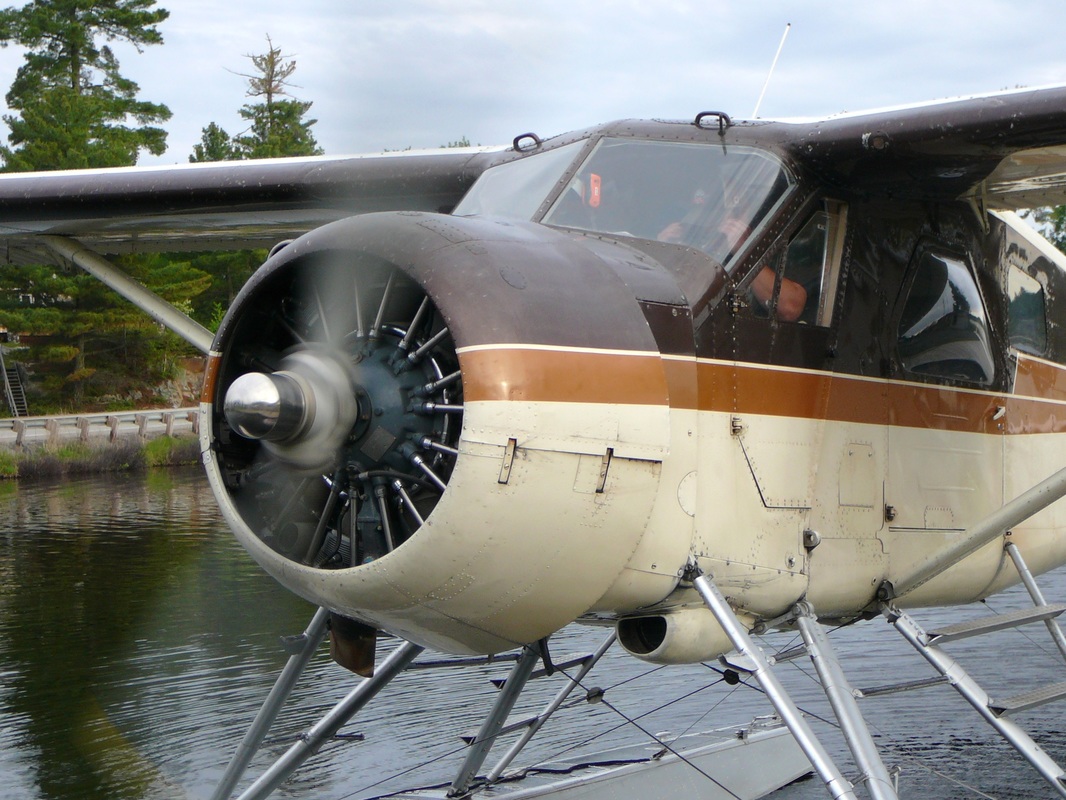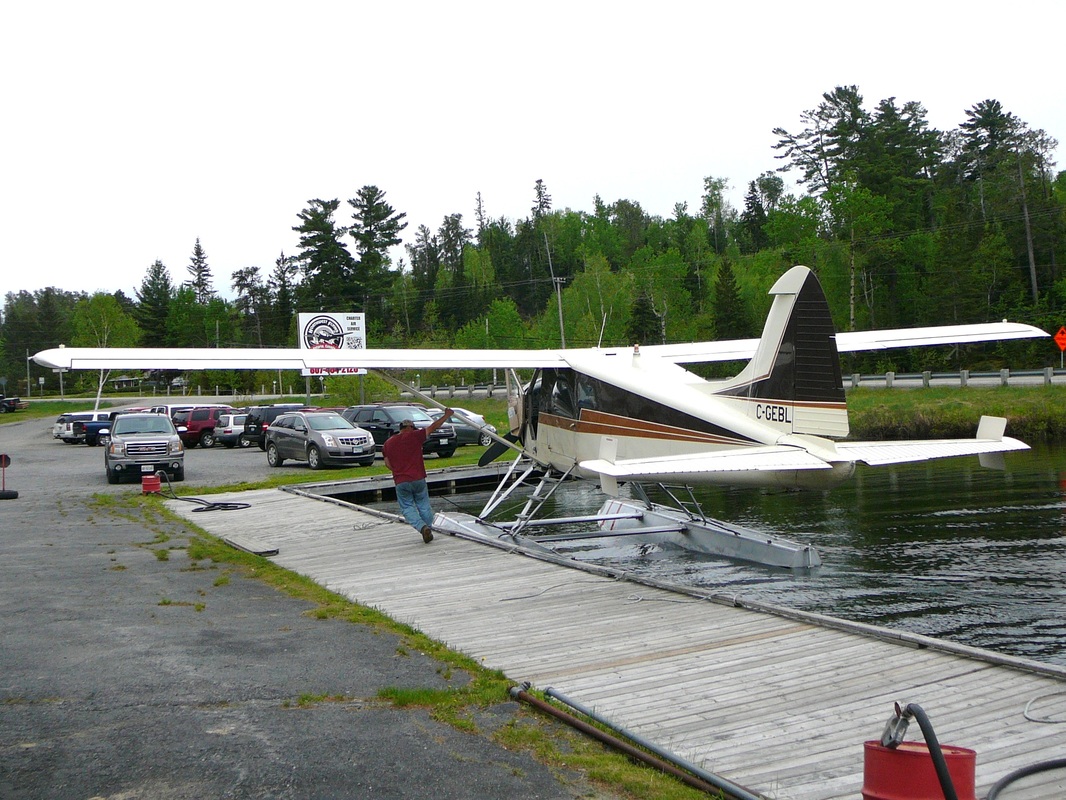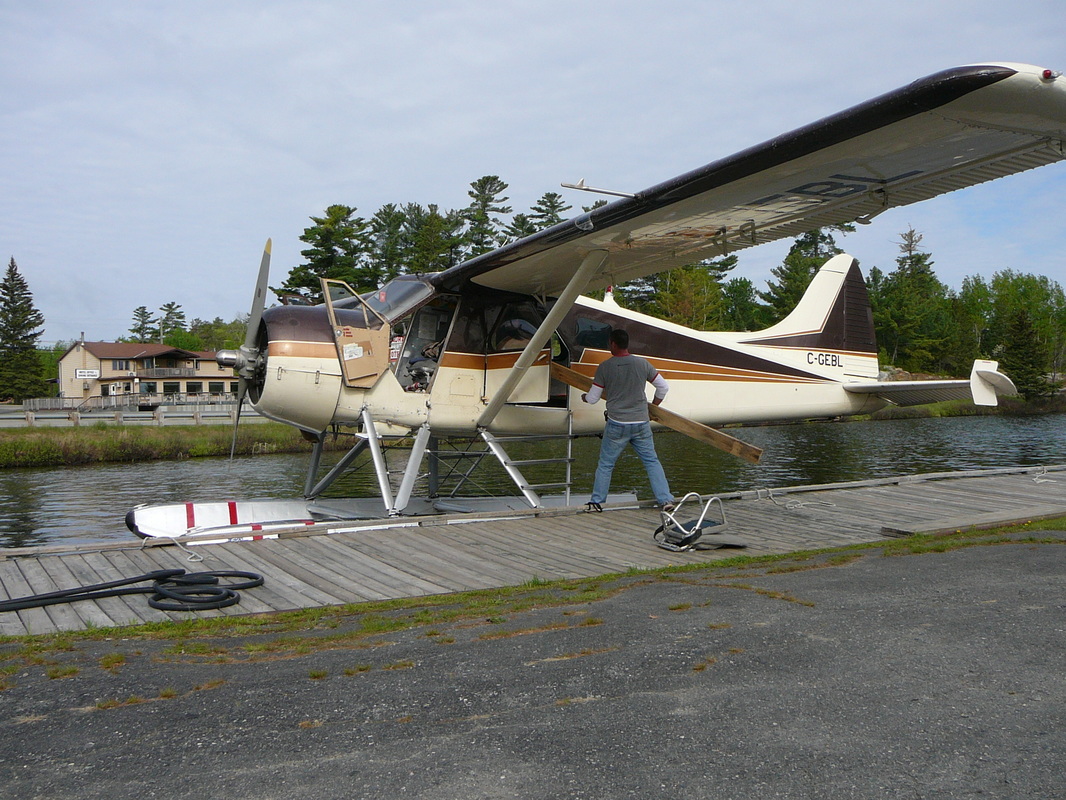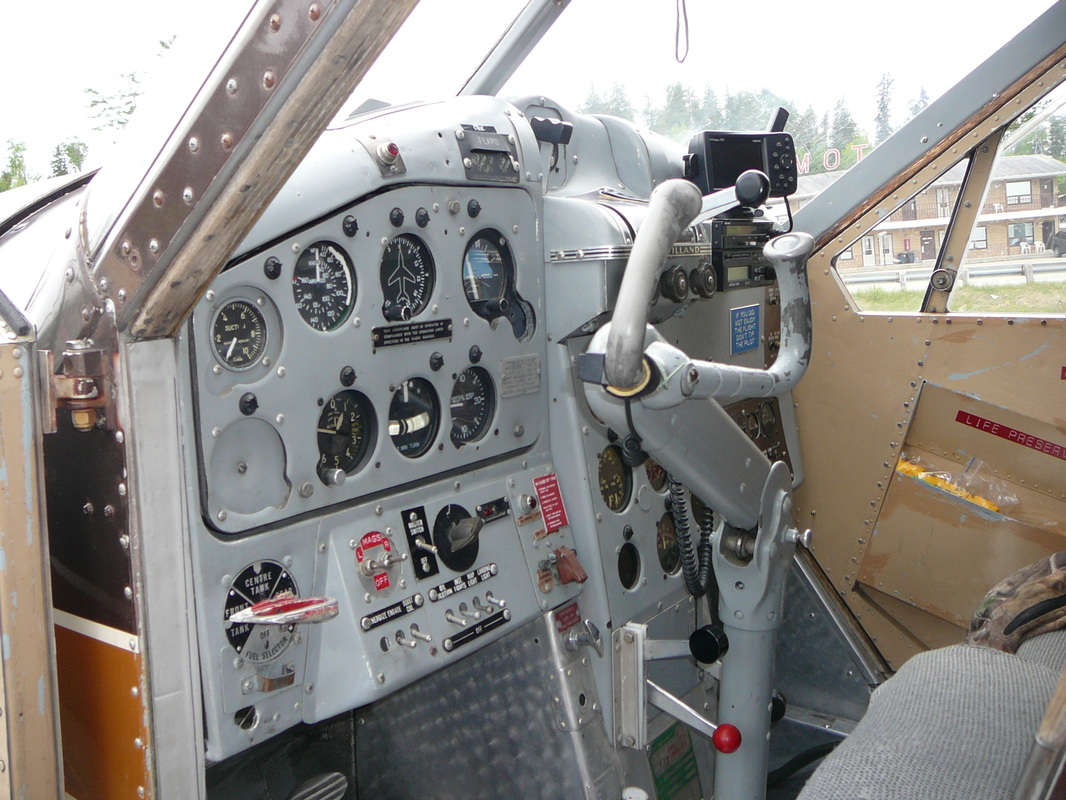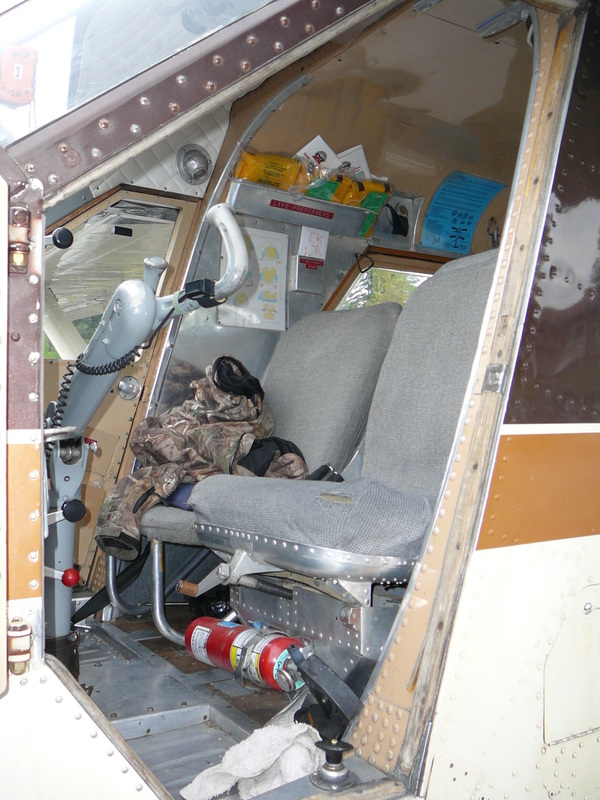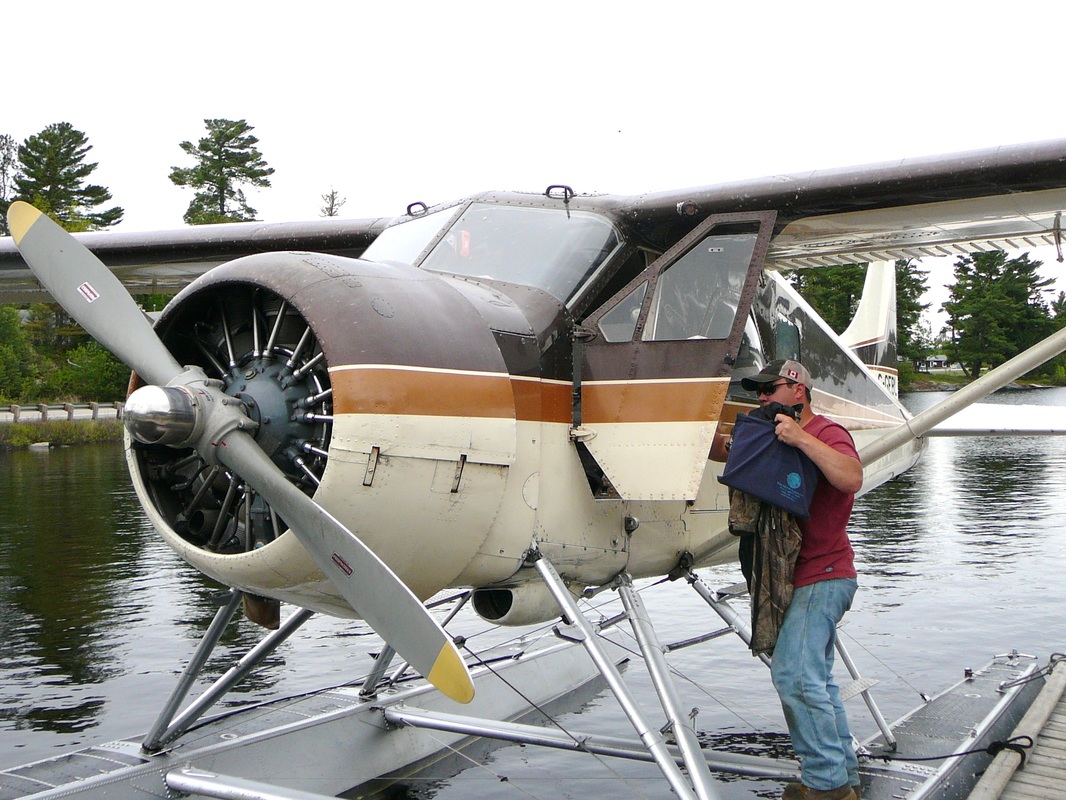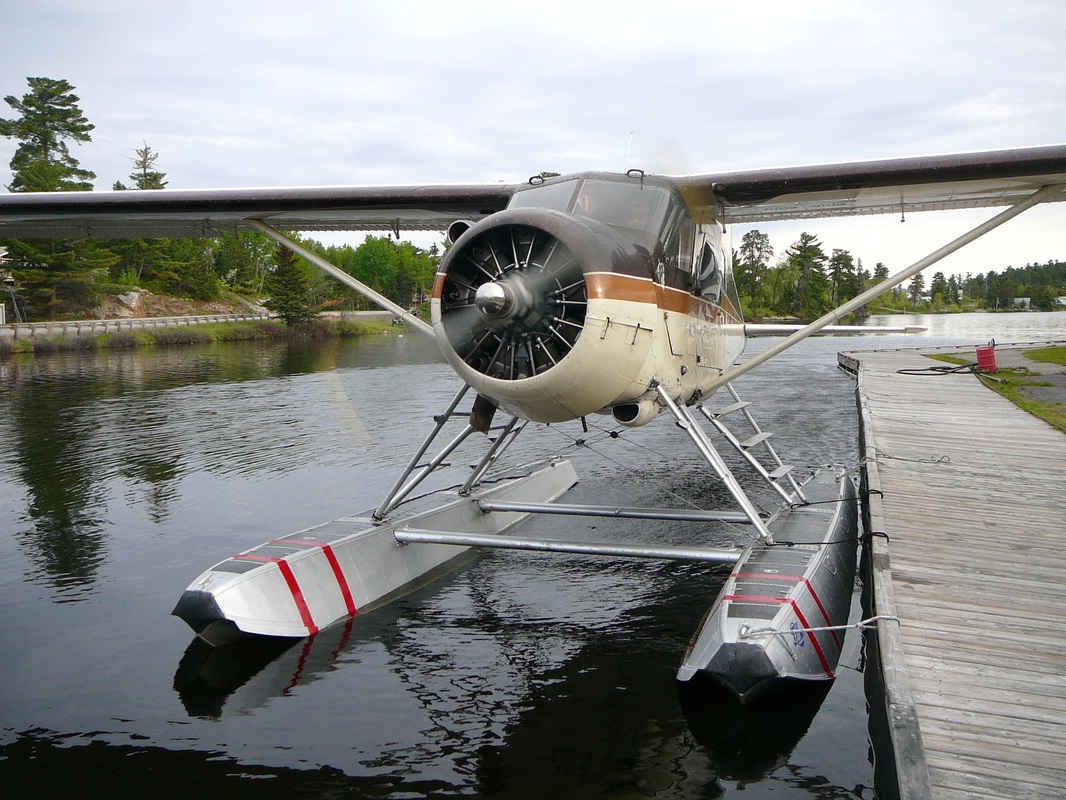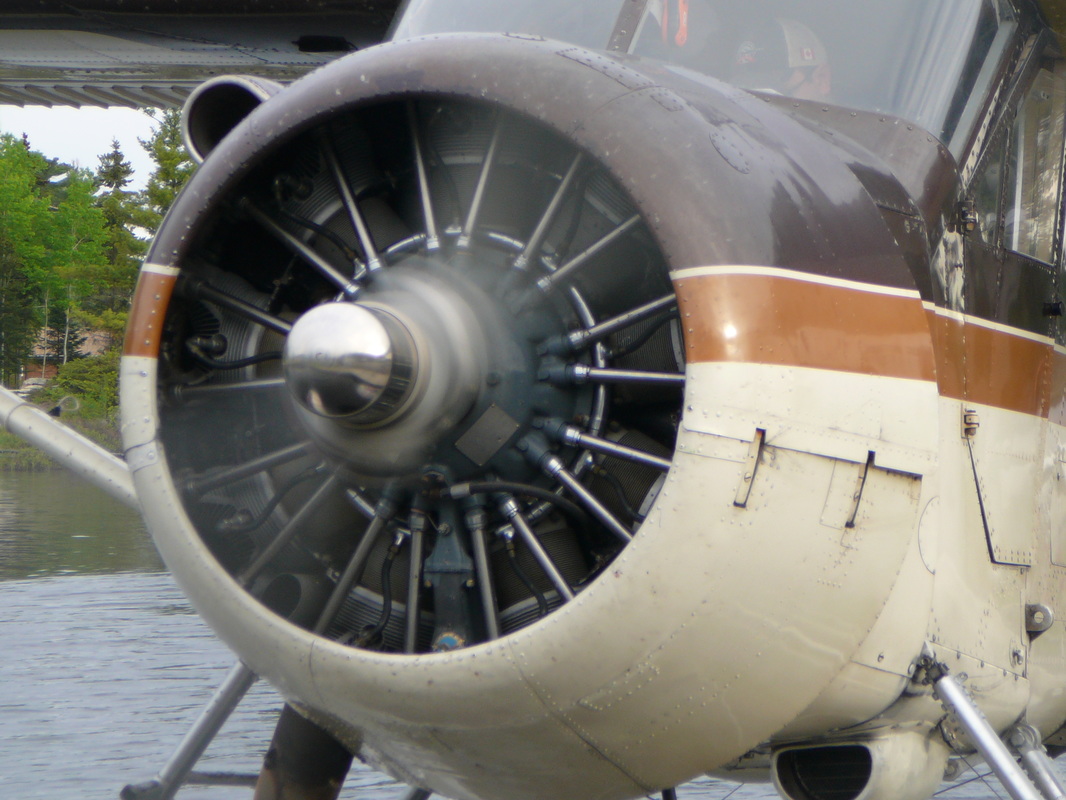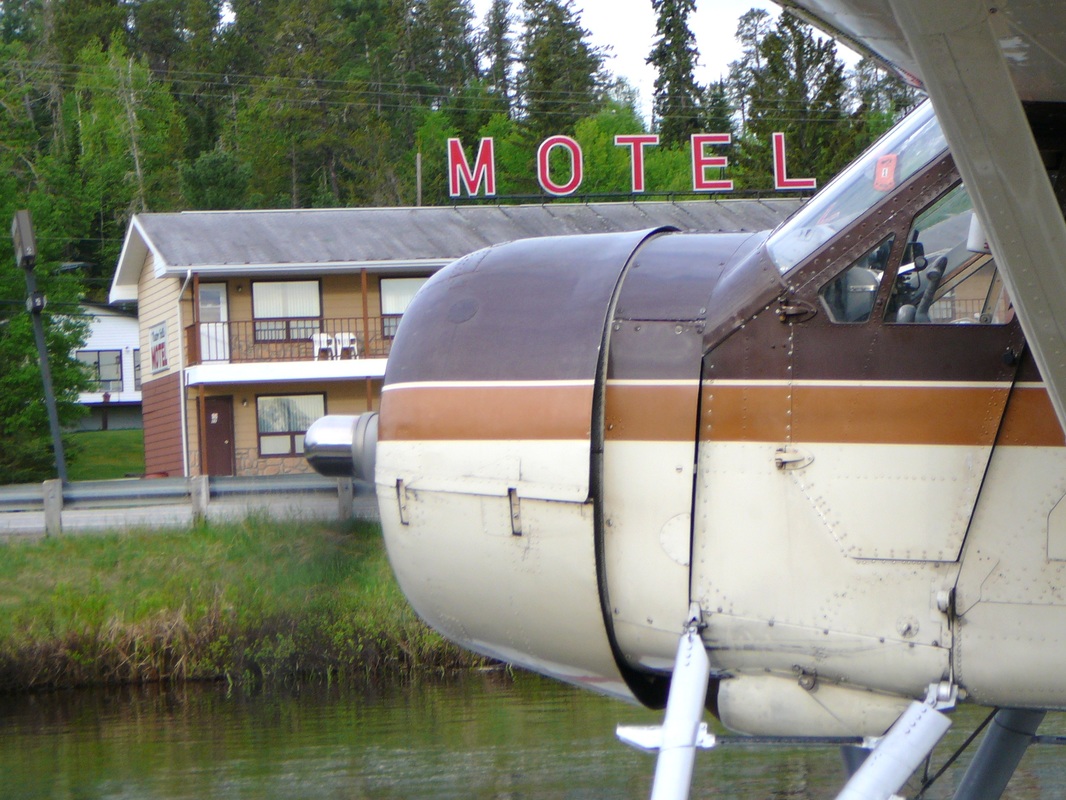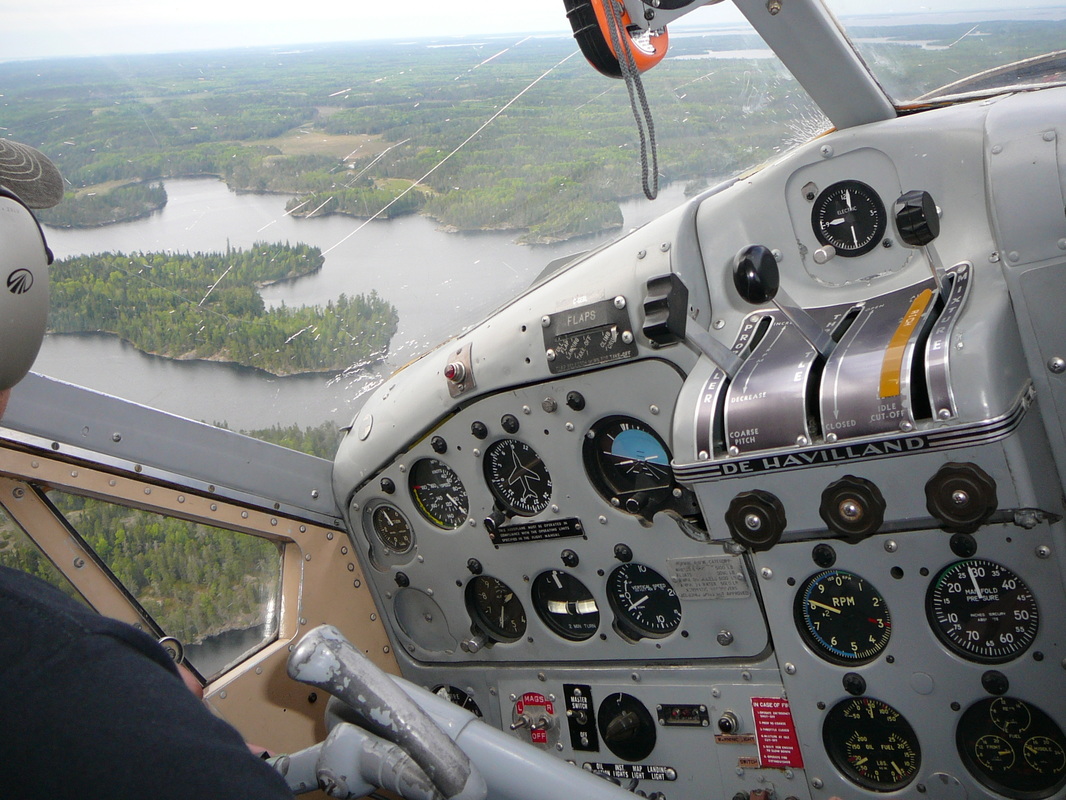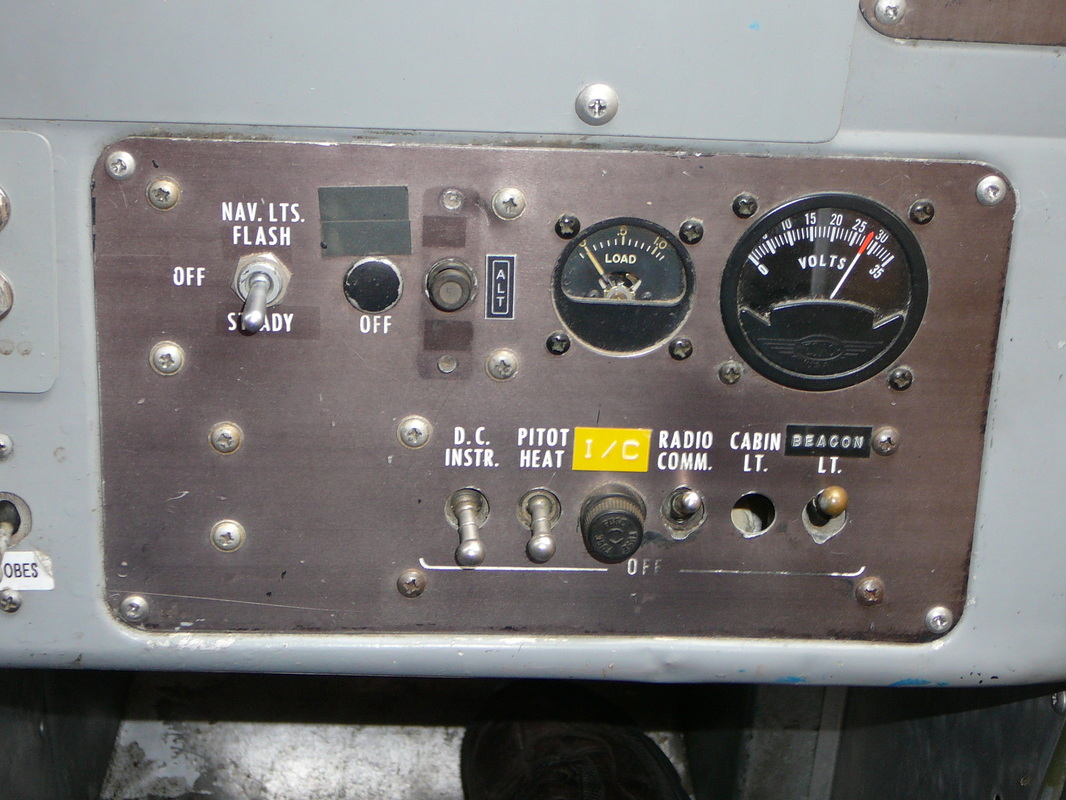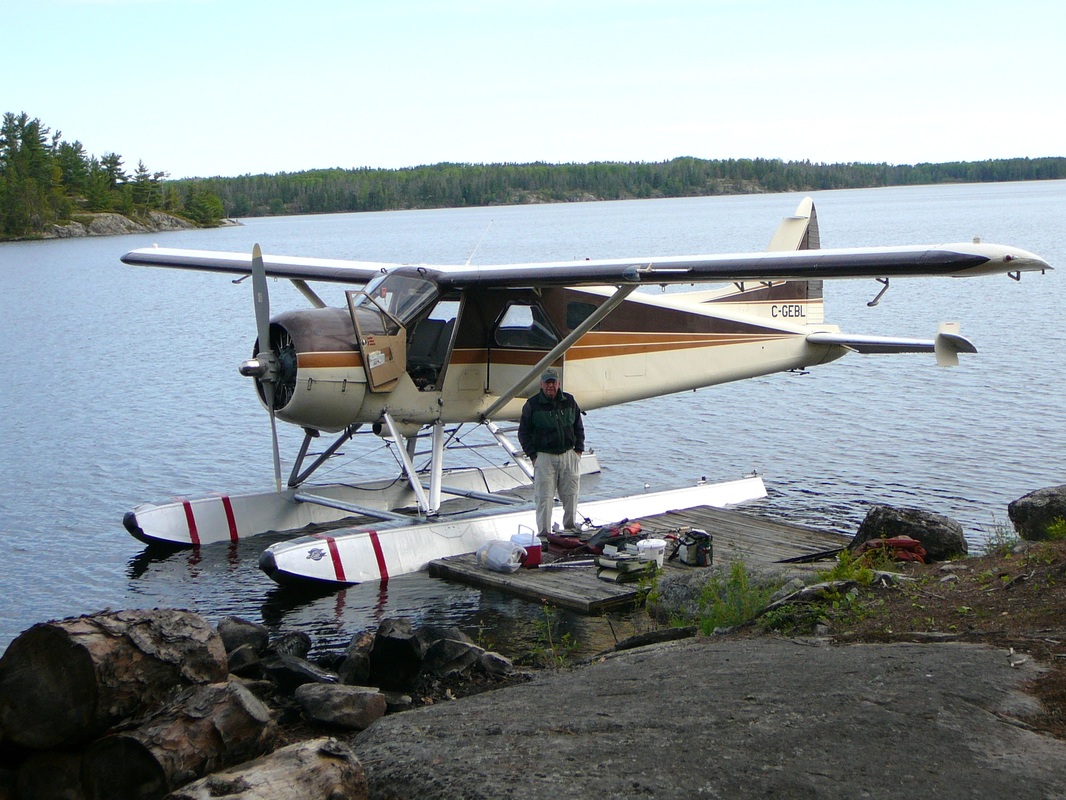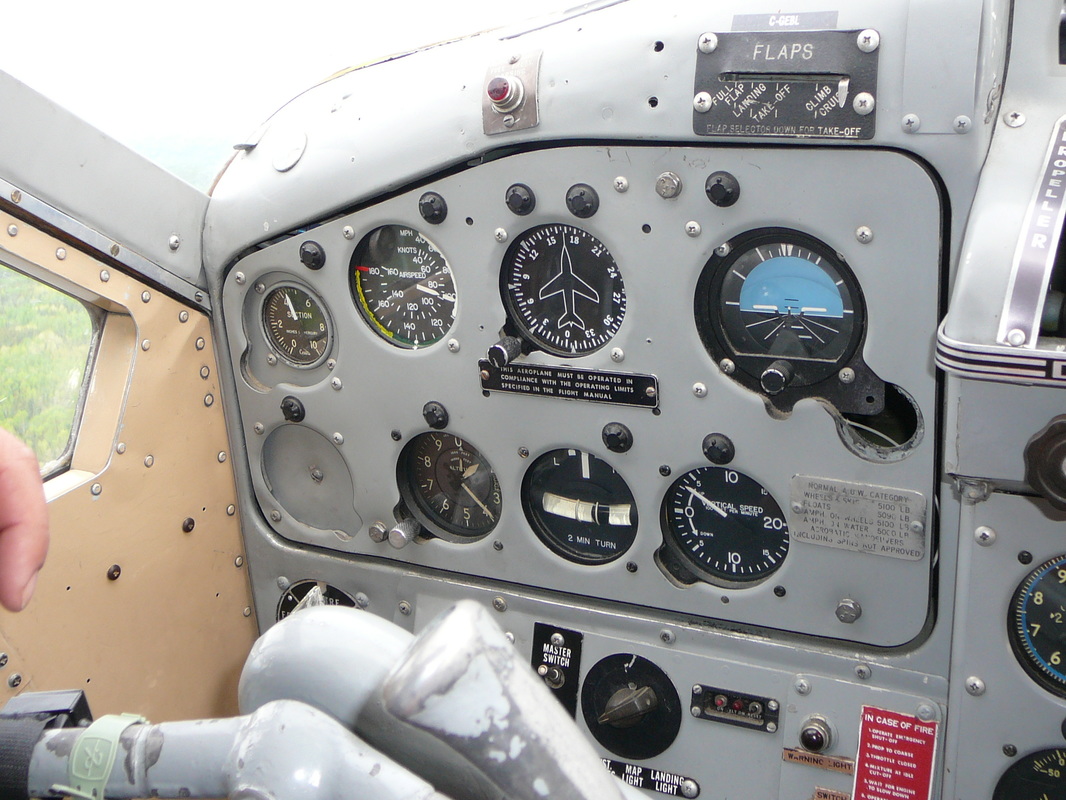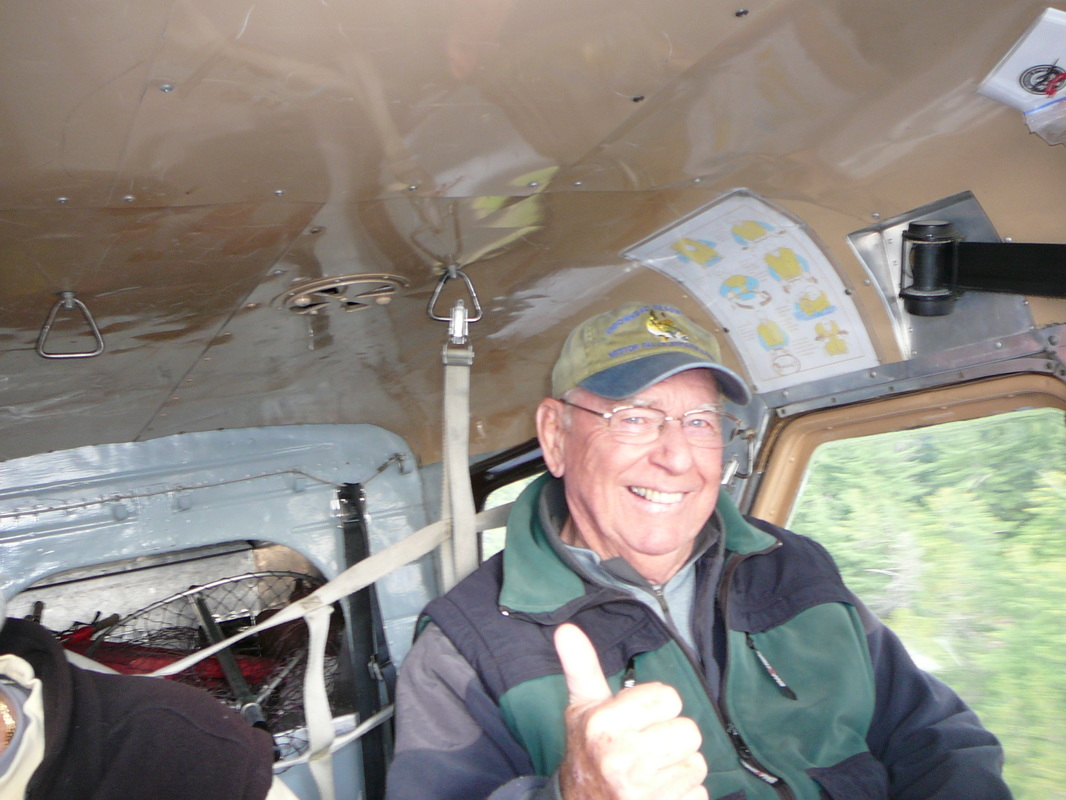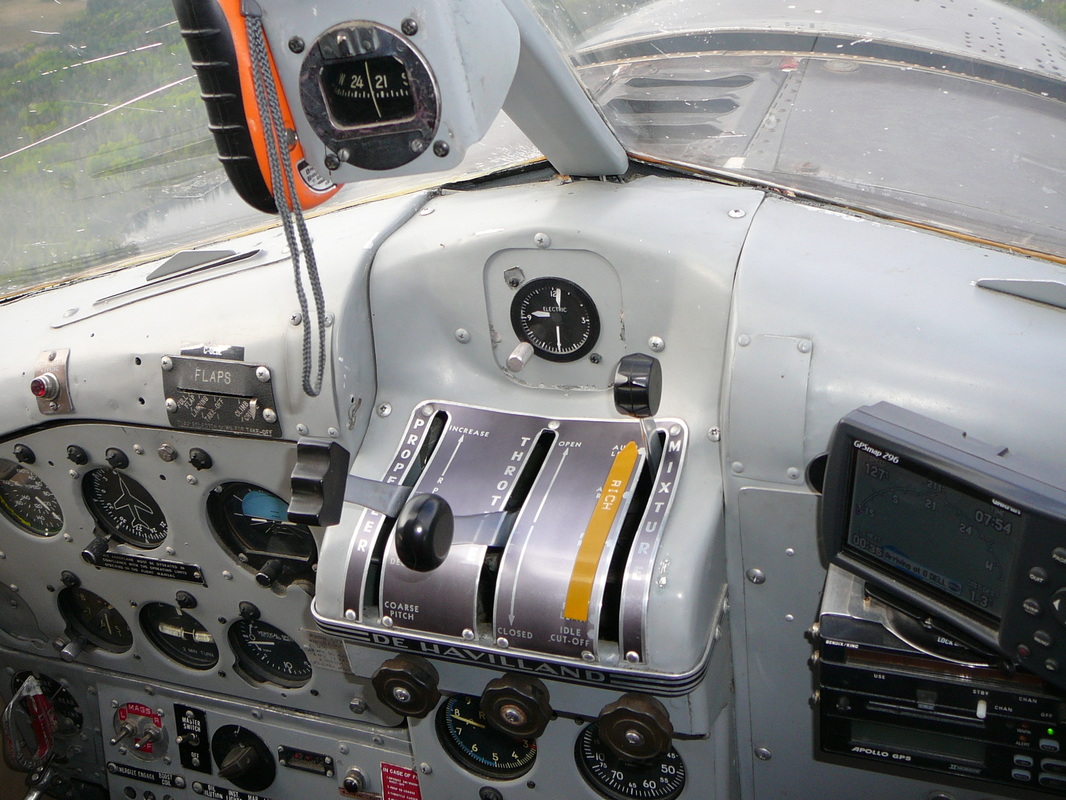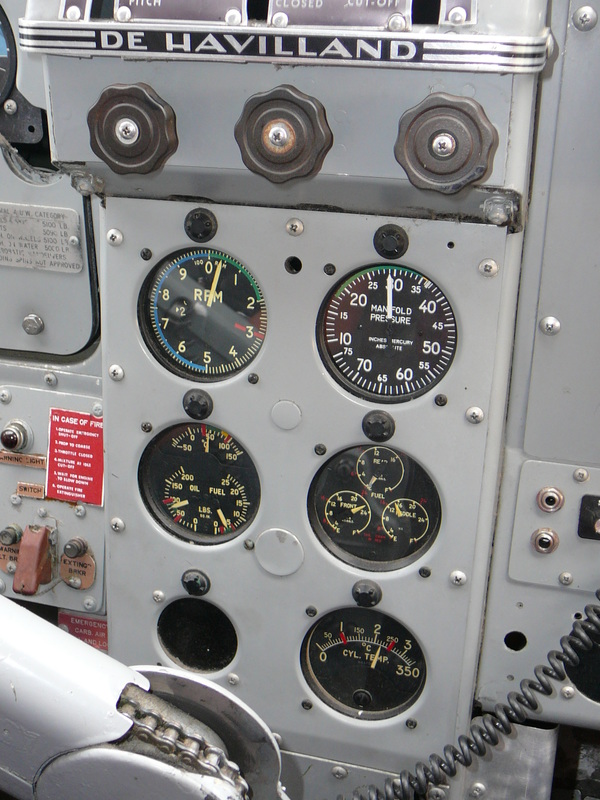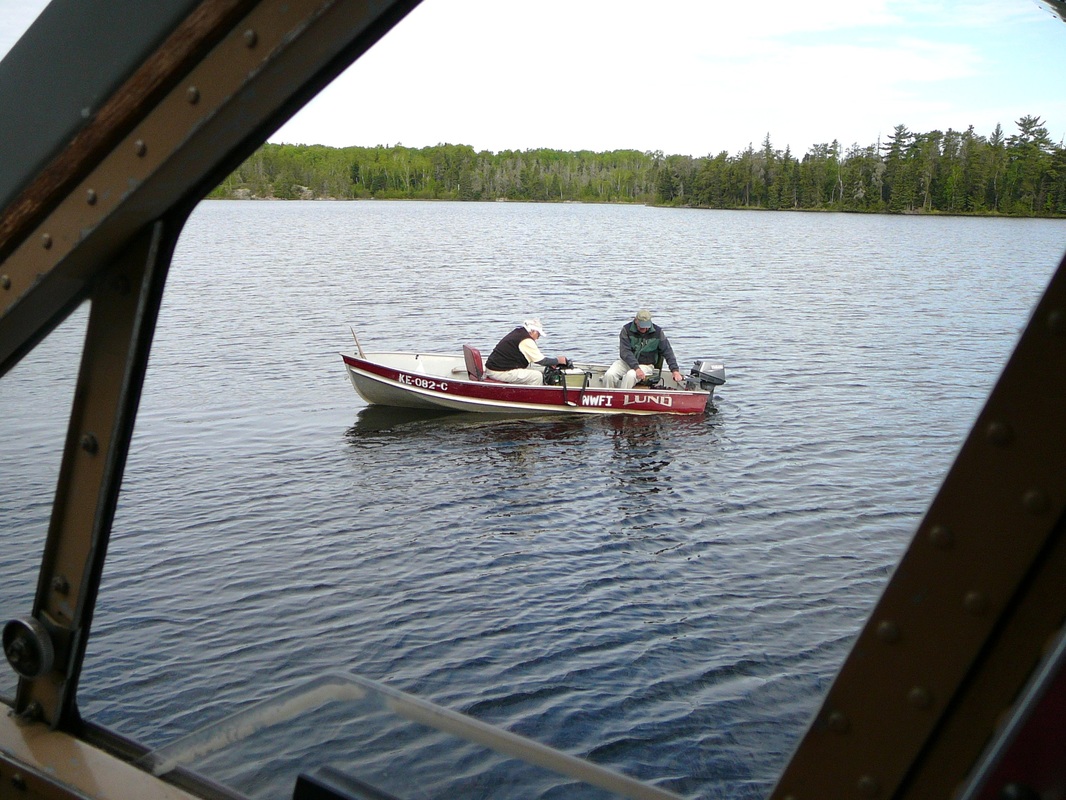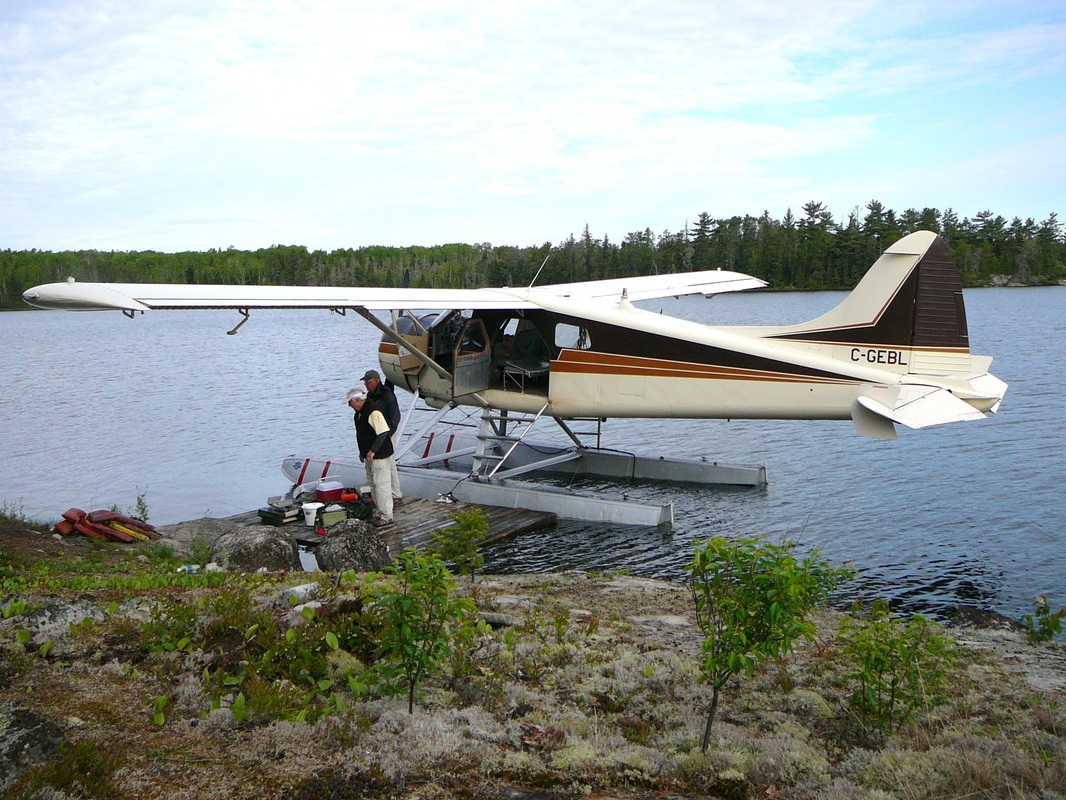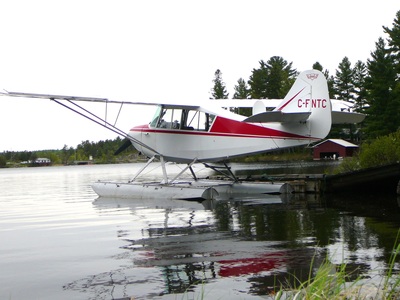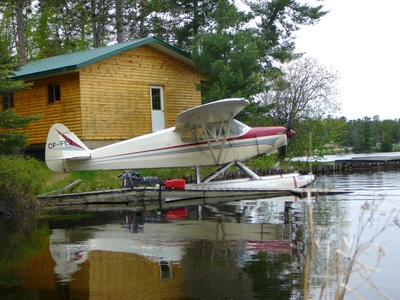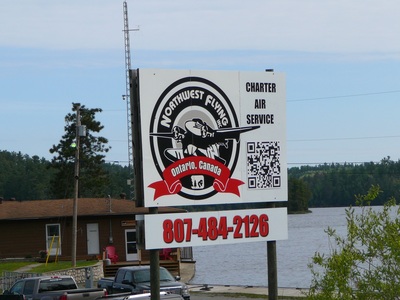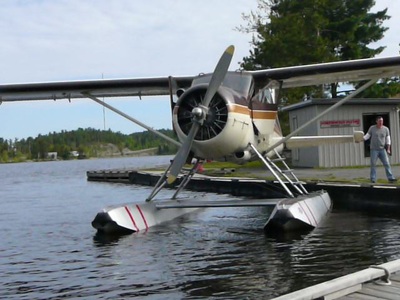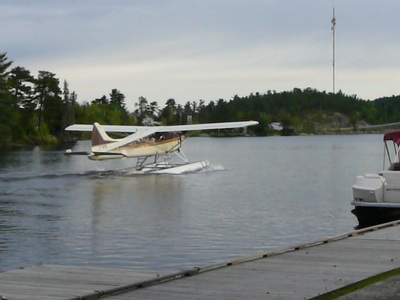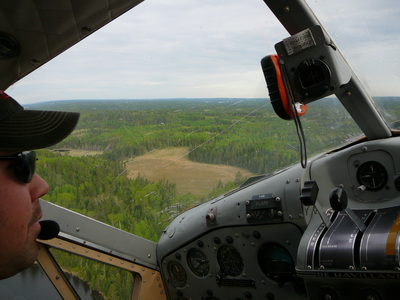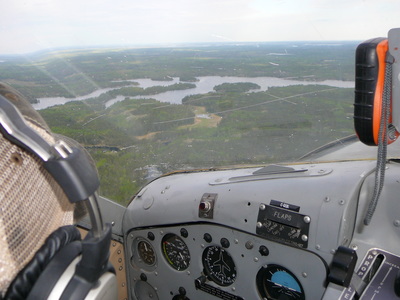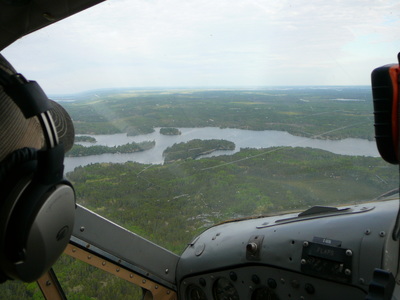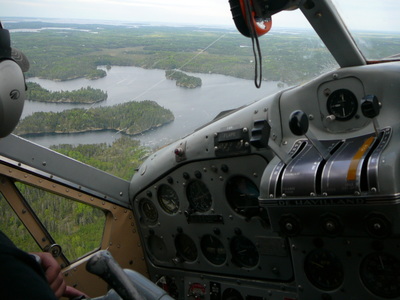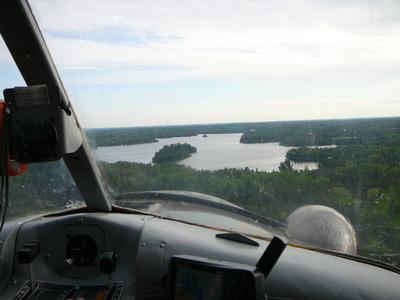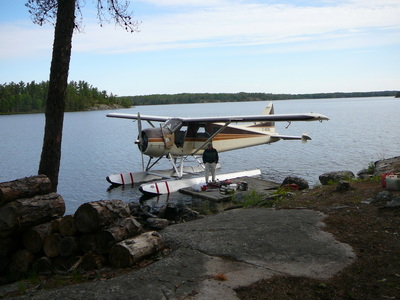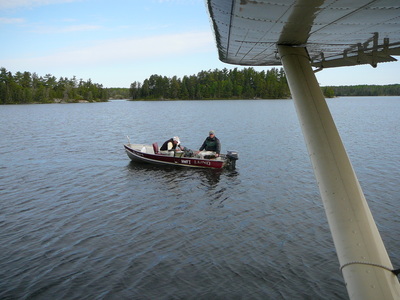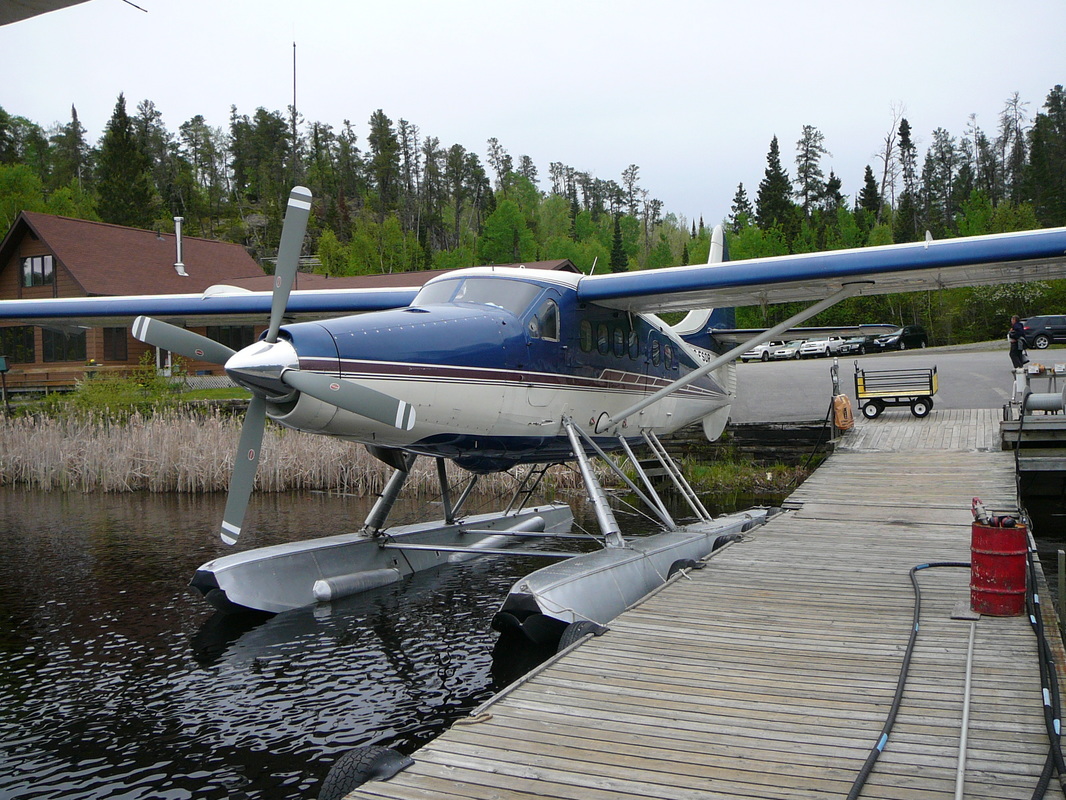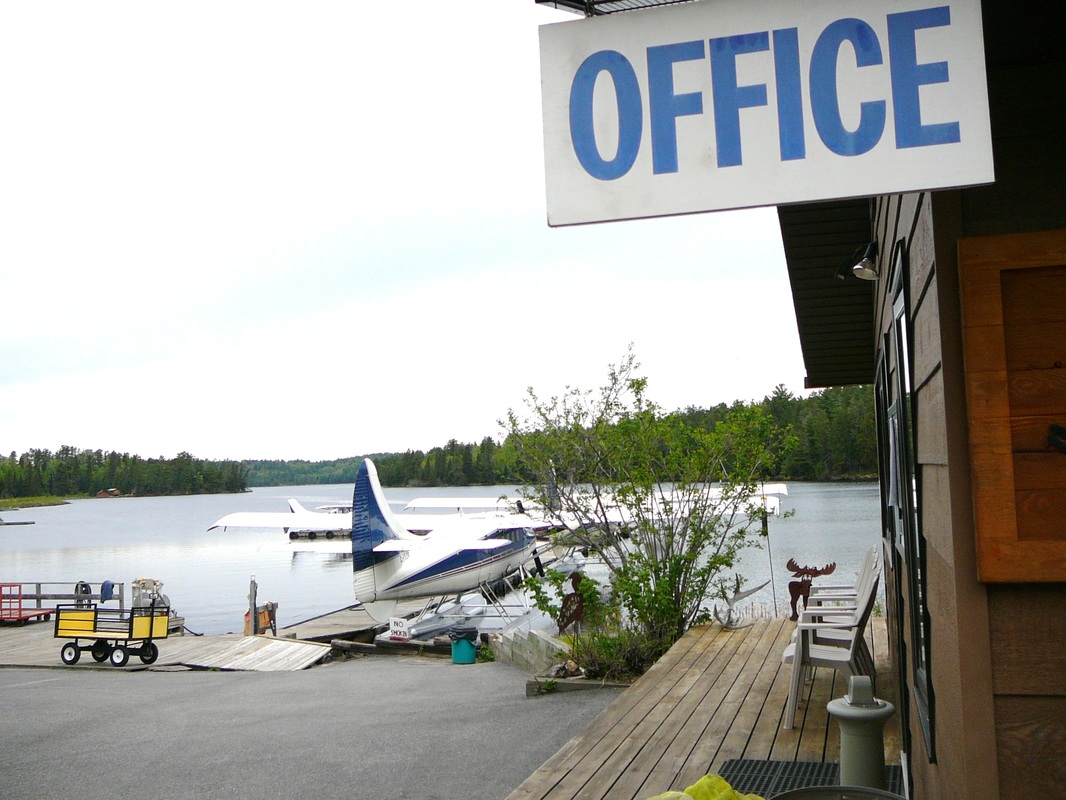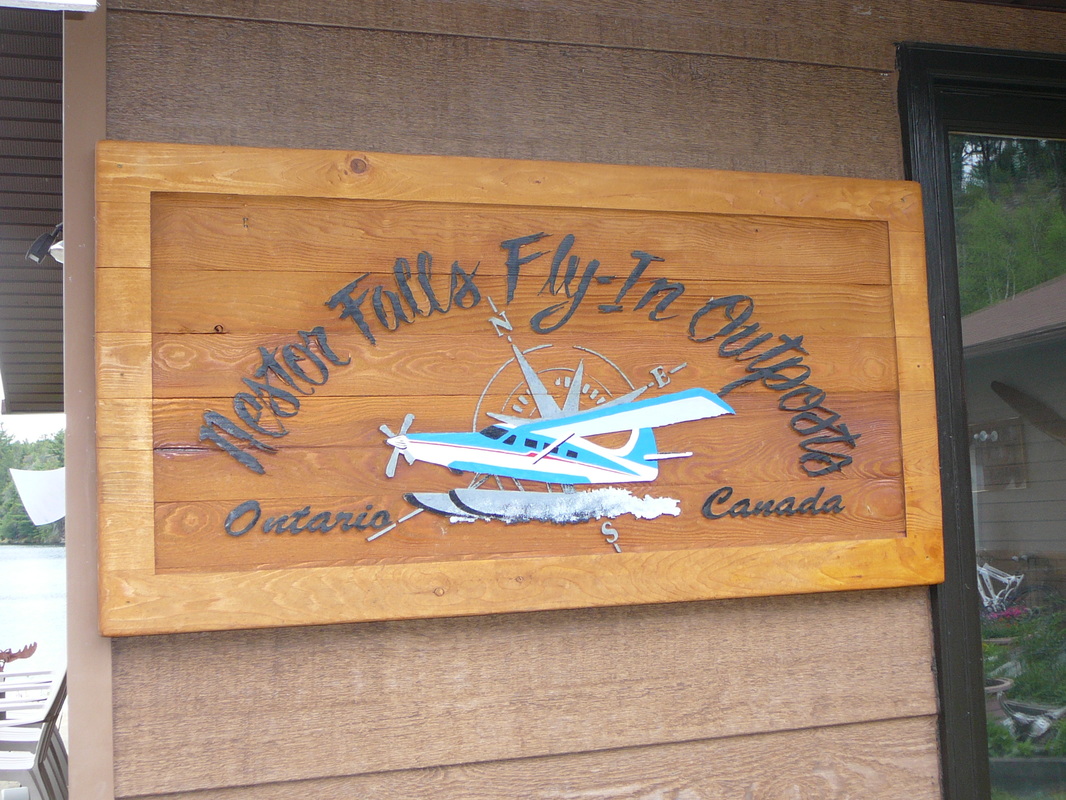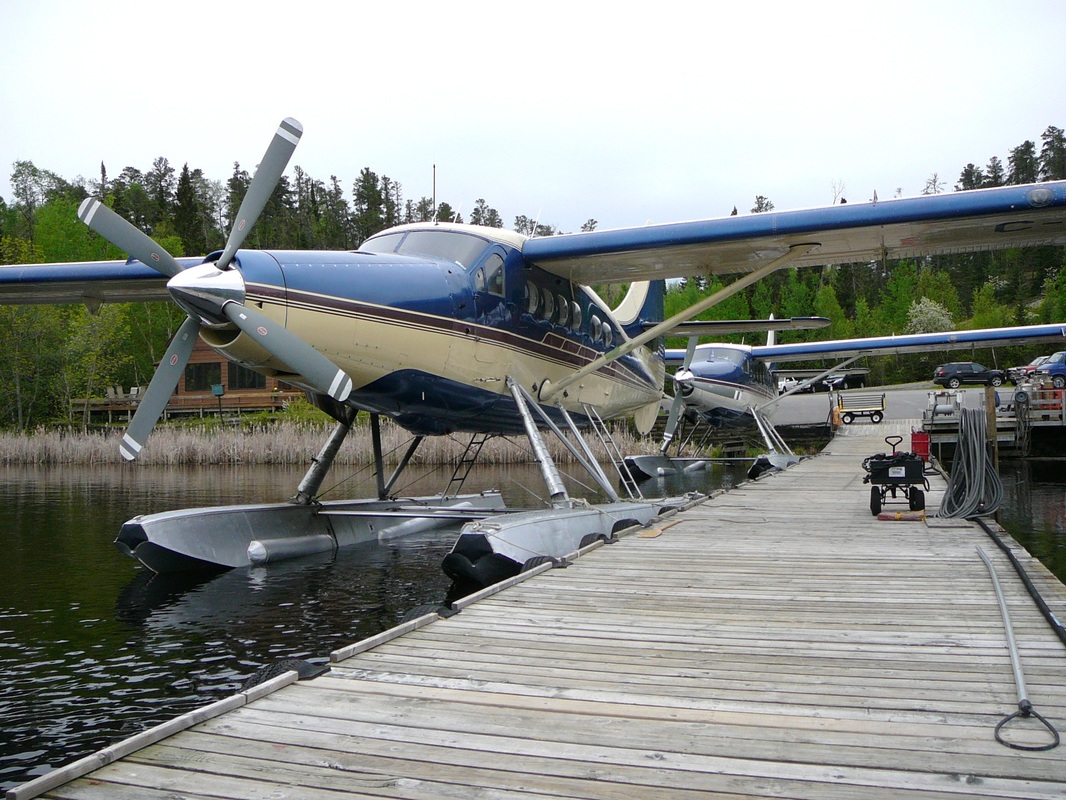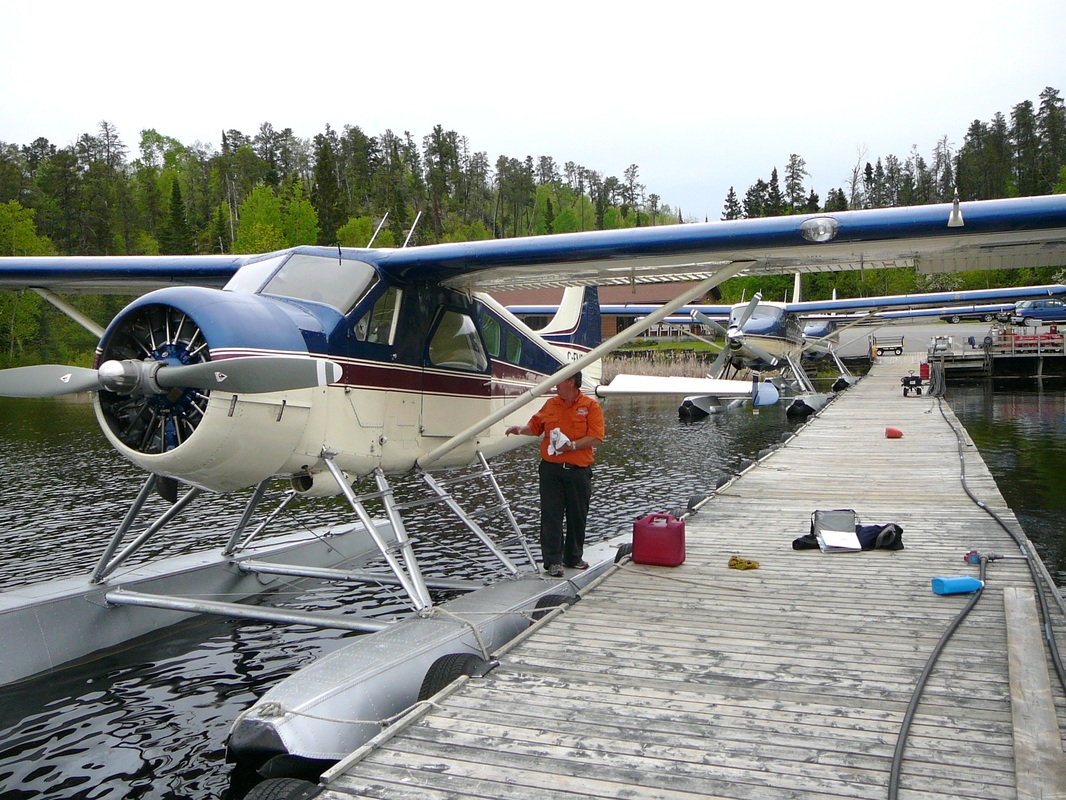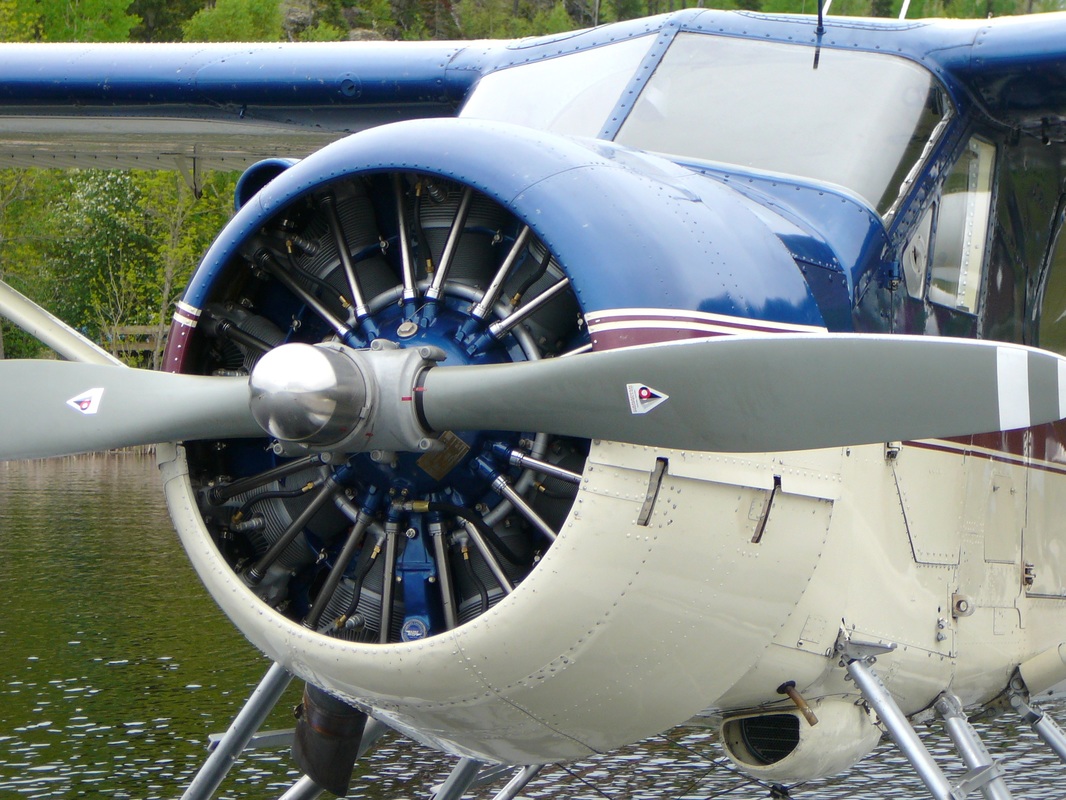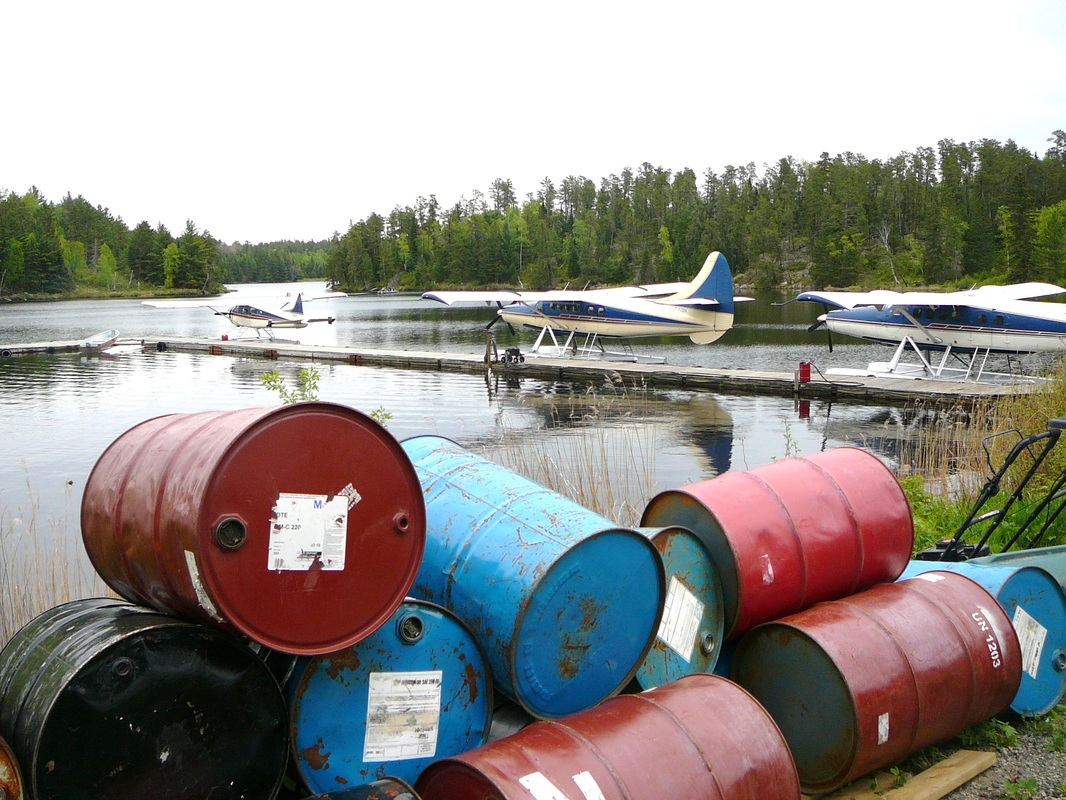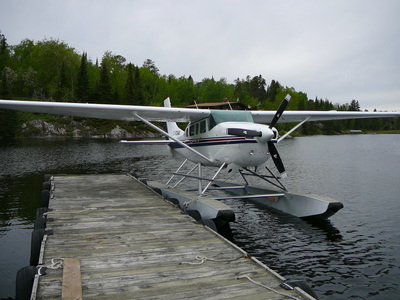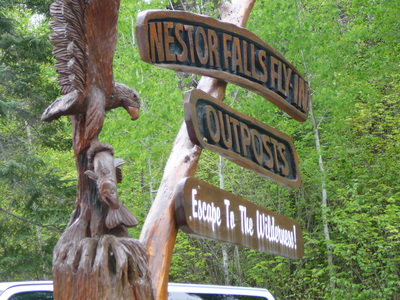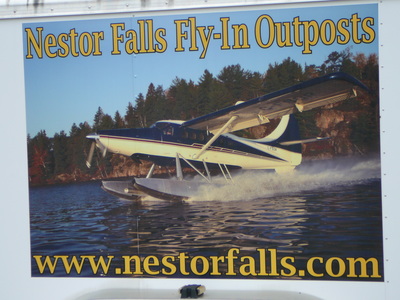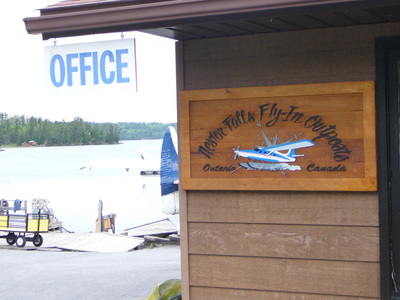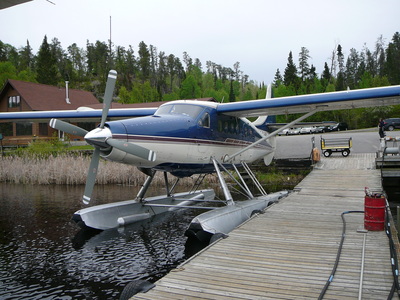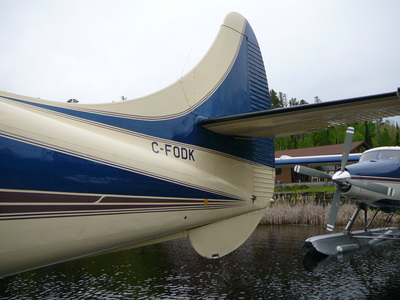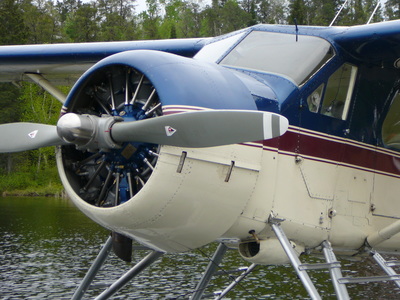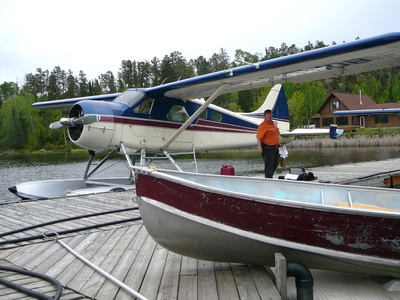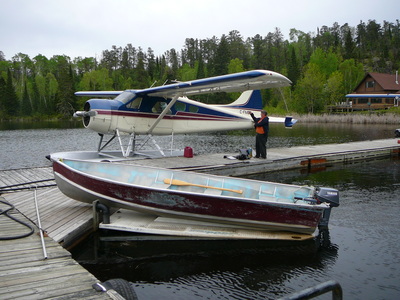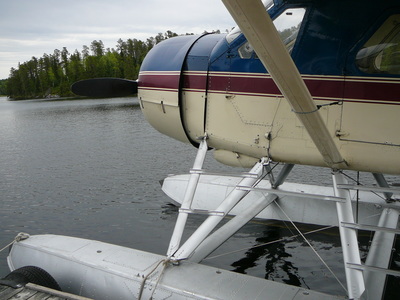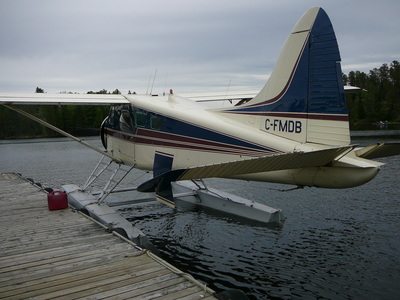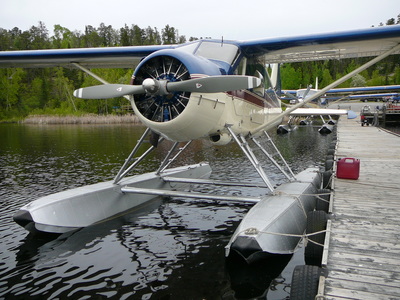Nestor Falls
|
Nestor Falls
Nestor Falls is situated only 100 kilometers north of Fort Frances, Ontario and International Falls, Minnesota, on the U.S. border. The settlement, between Kakabikitchiwan Lake and Sabaskong bay, was founded in the early 20th century by a certain Mr. Nestor who started logging operations and used the natural waterfall there to transport the logs to Lake of the Woods. Northwest Flying Inc.
It was a sunny afternoon in June 2013, when my fellow aviation enthusiast Servaas Verbrugge and myself drove along Highway 71 into the small resort town of Nestor Falls in the ‘Lake of the Woods’ area. Nestor Fall is about a two hour’s drive south from Kenora and the Northwest Flying Service base sits alongside the highway and can be easily found. Air transportation in Nestor Falls was started back in the late forties. In the early sixties Northwestern Flying Services was founded. The company changed hands a few times up until 1987 when Jack Pope acquired the property changing the name to Northwest Flying Inc. Jack is still running the business to this day, together with his son Shane and wife Gina. The folks at Northwest Flying are very friendly and taking pictures was no problem. Northwest Flying Inc. advertises herself as follows: - “Good fishing keeps changing with the seasons and the years. We've been flying out of Nestor Fallssince the early 60's and have learned to watch for the best lakes that Northwest Ontario has to offer. Northwest Flying is a commercial air charter company that will ensure your next Canadian fishing adventure will be a successful one”. C-FHZA Beech 18 Northwest Flying Inc. C-FNKL Beech 18 Northwest Flying Inc. C-GEBL DHC-2 Northwest Flying Inc. CF-FEJ Piper 12 private C-FNTC Aeronca 7DC private C-FNKL Highly polished Beech D-18S C-FNKL operated by Northwest Flying and seen at their Nestor Falls seaplane base. Sistership C-FHZA, is a genuine,1948, civilian Beechcraft D-18S, one of the few non-military Twin Beech's on floats. C-FHZA probably began life as a corporate aircraft and has been in Canada since 1954. Except for the Hartzell props, ‘Zulu-Alpha’ is a standard D-18 series floatplane with its two-piece windshield, outside carburetor air scoops, cowl flaps removed, cowl louvers and Super '18 tips. Note the Bristol Aerospace cockpit escape/crew hatch. The Canadian DOT required another exit so Bristol designed this one. The Bristol hatch is not just for emergencies. It is used regularly for the crew to get in and out. They also open it for ventilation while taxiing Video
The weather improved somewhat, with occasional sunny periods. The scenery during our drive from Kenora to Nestor Falls was absolutely breathtaking. Our first stop was at the Northwest Flying Inc. base adjacent to the highway, where Beaver C-GEBL and Beechcraft 18 C-FHZA were moored at their dock. The spectacular location across the Kakabikitchiwan Lake from the floatplane base, surrounded by rock outcrops of the Canadian Shield and on the edge of the forested area is unforgettable. Having previously contacted the Mr. Jack Pope, owner of Northwest Flying Inc., he was aware of our intentions. Inside was an amazing collection of photographs on the walls depicting the history of flying from Nestor Falls. He advised us that their second Beech 18 was due to return in a couple of minutes. Soon, we heard the melodic sound of an approaching aircraft and C-FNKL was seen landing on Kakabikitchiwan Lake. After filming her arrival at the dock, we then retired to the Nestor Falls Hotel, where we relaxed over dinner and a few beers, reflecting on what had been a truly memorable day. Two Beech 18’s Northwest Flying operates two Beech 18’s and a Beaver from its base on Kakabikitchiwan Lake. The average age of the two aircraft is now just over sixty years old. C-FHZA is the oldest airframe. The slower and smaller Beaver is used to operate on sectors where loads would not support the operating costs of the Beech 18. |
|
|
Nestor Falls
C-FNKL The fabric covered seaplane rudder underneath, typical of all Twin Beech floatplanes. C-FNKL was Bristol Aerospace Beech 18 floatplane conversion prototype in 1962. Northwest Flying has had it since 1964! Highly polished Highly polished Beech D-18S C-FNKL operated by Northwest Flying and seen at their Nestor Falls seaplane base. ‘November-Kilo-Lima’ is a Beechcraft C-45G constructed for the USAF. It was subsequently among the nearly 300 'G's that were converted to the C-45H by replacing the Aeroproducts propellers with Hamilton Standard, 22D30 Hydromatics. The preflight inspection includes: Swinging the propellers through 10 rotations to feel for resistance and a possible hydraulic lock. Refill the oil – she uses about one quart per hour per engine – and the do the usual inspections before climbing into the cockpit. Starting the engines require quite a lot of priming, seven strokes with full resistance. Mixtures rich, props fine pitch, throttles open till just after the gear warning switch ‘clicks’, fire extinguisher to the right engine. Select RH engine and press the start button. After five revolutions, mags on, and she should fire just fine, with a plume of smoke and a sound that you’ll never forget. Same procedure for the LH engine. Warming the engines is critical. Do not run above 1000 RPM at less than 40 degrees. That can take a while, but it gives you time to set up the avionics and get everything organized. No flaps for take off. Power up to 36 inches MAP. Lift-off follows at about 60 kts. and accelerate to about 90 kts in the climb. Reduce to 2000/30 and enjoy. Cruising is done at various power settings, from 1800 RPM and enough MAP to maintain 125 kts for best range. ELT Located in Rear Baggage Compartment Distress radio beacons, also known as ELT (Emergency Locator Transmitter), are tracking transmitters which aid in the detection and location of boats,aircraft and people in distress. Strictly, they are radiobeacons that interface with worldwide offered service of Cospas-Sarsat, the international satellite system forsearch and rescue (SAR). When manually activated, or automatically activated upon immersion, such beacons send out a distress signal. The signals are monitored worldwide and the location of the distress is detected by non-geostationary satellites and can be located by some combination of GPStrilateration and doppler triangulation. The basic purpose of a distress radiobeacon is to help rescuers find survivors. Since the inception of Cospas-Sarsat in 1982, distress radiobeacons have assisted in the rescue of over 28,000 people in more than 7,000 distress situations. Fishermen with their stuff Fishermen with their stuff. Outbound flights from the base to the lodges require the floatplane to be capable of carrying the members of the group, all of their bulky groceries and equipment plus of course return fuel. |
|
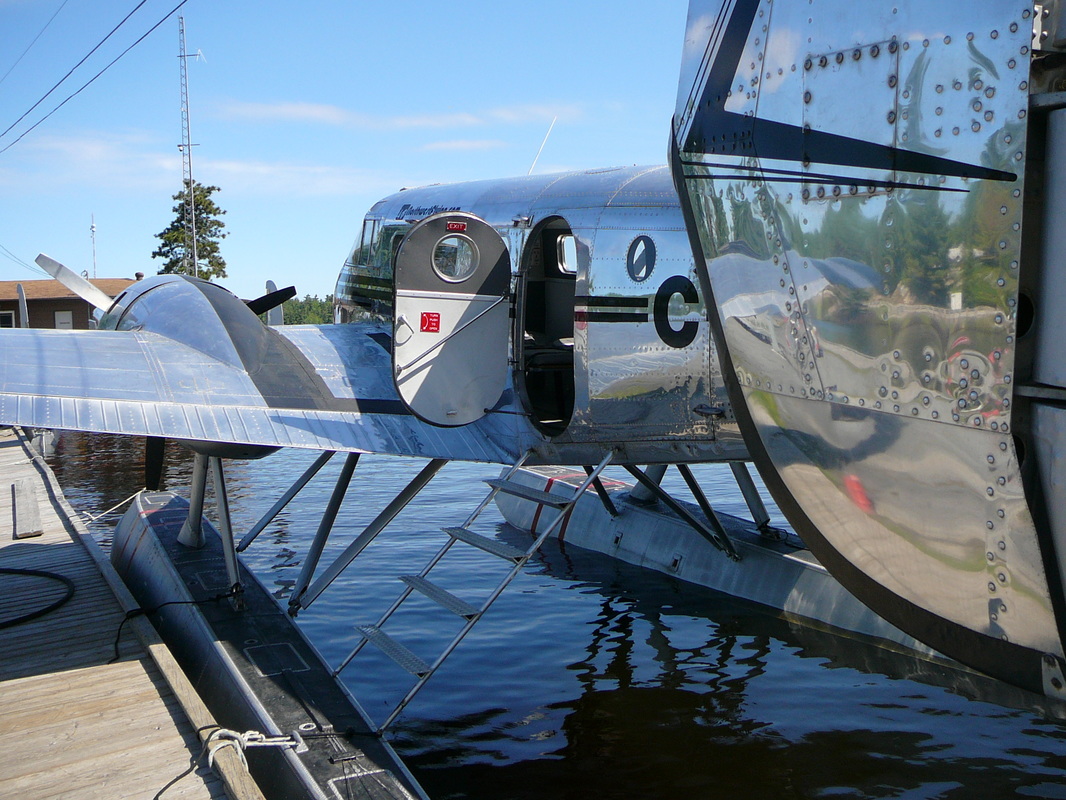
The magnificent sight of polished natural metal Beech D-18S floatplane C-FNKL still gleaming despite any sunshine. She sported two black lines along the fuselage, a black tail flash and Northwest Flying.com titles. Each Beech had its own interior configuration. This one is a combination of bench and seats. It has an Hamilton cargo door which is split in the middle and hinged on both ends
|
Nestor Falls
As power was increased, noise and vibration was noticed in the cabin as the Brett maneuvered ‘Kilo-Lima’ against the river current into the middle of the channel. As the Beech turned with the current, the throttle was set to take-off power and a curved take-off path began. Video I climbed up into the fuselage, walked through the Spartan cabin and in the back of the plane I noticed the de Havilland Aircraft of Canada construction plate showing the airframe as construction number and date of manufacture May 1953. After I had clambered into the co-pilot’s seat, I strapped myself in and was ready for action. Once Brett had returned to the cockpit he signaled to the staff to push the Beech away from the dock. First the port Pratt & Whitney R-985 radial burst into life in characteristic fashion. The Beech came alive and began to vibrate. Then the starboard engine was fired up and as the noise level increased the headset became most welcome. Brett steered the aircraft away form the dock and then turned toward the middle of Kakabikitchiwan Lake. He performed a full and thorough power check prior to departure and once the oil had warmed sufficiently he turned the Beech into Oar Bay channel. After applying take-off power, the Beech accelerated on the foaming water, rose on the ‘step’ and with gentle rearward movement on the control column ‘Kilo-Lima became airborne. During the climbing turn, I could see Highway 71 threading its way between the lakes and forest where we had driven earlier that day and was enjoying the view and smooth flight with good visibility over the Lake of the Woods. During a climbing turn During a climbing turn, I could see the two Nestor Falls floatplane bases below and realized just how many lakes there are in the area. We passed over a myriad of lakes and islands with forest and few roads. All too soon Brett started the descent, alighted the floatplane on the water of Cleftrock Lake in foaming spray and then taxied towards the small jetty of the lodge. Floatplanes are used to ferry fuel, supplies and other equipment to the remote lodges, whilst also removing any garbage and transporting the guests. Boats are located at each lodge for use by the customers during their stay and are rarely transported. Our flight continued towards the next lodge. Soon the descent was started, engine power was reduced and flaps were set for landing. The Twin Beech alighted on the water with a splash and some spray on the windshield. Brett stopped both engines and the floatplane drifted towards the dock. At the appropriate moment he opened the roof hatch and began the mooring process. The fishermen disembarked and headed along the jetty towards the footpath leading to the lodge named Tang of the North. Thanks for Brett for letting me fly right seat! Northwest Flying utilizes their Beech 18’s Northwest Flying utilizes their Beech 18’s to service its remote outpost cabins and camps. Floatplanes are used to ferry fuel, supplies and other equipment to the remote lodges, whilst also removing any garbage and transporting the guests. Loading all the gear and passengers is an interesting task and is part of the ’wilderness experience’. |
|
|
The aircraft is powered by a Pratt & Whitney ‘Wasp Junior’ model R-985SB3 nine-cylinder single-row radial engine, rated at 400 BHP at 5,000 ft altitude. The engine drives a Hamilton-Standard constant-speed propeller; crankshaft and propeller rotation being clockwise. The supercharger is an engine-driven single-stage centrifugal type. Propeller diameter measures 8 ft. 6 in. The engine control quadrants inside C-GEBL is located at the top of the pedestal, with power control levers arranged in civil configuration. Left to right, propeller, throttle and mixture. When INCREASE RPM is selected of the propeller lever, the governor directs oil from its own engine driven pump to the propeller, at pressure, which hydraulically moves the propeller blade, in opposition to the counterweight, to lower angels. Friction control knobs, one below each control lever, increase lever friction when rotated clockwise. A shock-mounted flight instrument panel is provided for the pilot and incorporates and altimeter, turn-and-bank indicator, rate-of-climb indicator, air speed indicator, directional gyro and artificial horizon. The battery master switch is located in the left-hand upper corner of the flight instrument mounting panel. It is of the double pole, single-throw type and interrupts the battery output to the electrical system. Note the red painted oil-filler cap at the base of the control column. This design feature allows easy access for oil fill during flight! The oil tank is located aft of the fire-wall and is serviced from inside the cockpit through a filler at the base of the pedestal. The capacity is 5 ¼ imperial gallons. A fuel wobble pump lever with the red knob, below the engine instrument panel on the pedestal, is used to build up the fuel pressure to 5 psi, for starting the engine. The lever left wobble lever is carburetor air lever. All hot air outlets are controlled simultaneously by a push-pull control, on the base of the pedestal (under the wobble lever) which permits intermediate positions between ON in its up position and fully OFF. The control column can be thrown over during level cruising flight without disturbing the balance of the aircraft by grasping the upper portion of the column and allowing the hand wheel free movement as the upper portion is ‘thrown-over’ for use by the co-pilot. A combined fuel pressure, oil pressure and oil temperature gauge is located on the right side of the engine instrument panel. A volt-ammeter, located in the electrical switch panel, indicates the amperage of the generator supply. The voltage of the generator supply is indicated when charging by pressing the stud at the lower left of the instrument. When the generator is not operating, the battery voltage only will be indicated. Hot air for heating the interior of the cabin is supplied by ram air passing through a heat exchanger tube in the engine exhaust system. From a four-way outlet at the center of the cockpit floor, the heated air is ducted to the pilot’s seat and front passengers feet and to two outlet grills in the cabin floor. A heated air outlet at the top of the instrument panel permits defrosting of the pilot’s windshield. All hot air outlets are controlled simultaneously by a push-pull control, on the base of the pedestal which permits intermediate positions between ON in its up position and fully OFF. |
|
|
|
|
|
Nestor Falls Fly-in Outposts We continued our journey and just several kilometers further down the road to Fort Frances, a signpost directed us to Nestor Falls Fly-In Outposts. It took us along a gravel road through the forest before reaching their base at Daws Bay. On arrival there was a car park, log pine offices and the sight of two Turbo-Otters, a Beaver and a Cessna U206 floatplane moored at the dock. We checked in at the small and cozy office cabin where we were greeted by Dave Beaushene and his wife Michelle who are running the business. Born and raised in Nestor Falls, even as a boy, Dave Beaushene dreamed of becoming a commercial bush pilot, fishing remote areas and sharing his love of the region with others. Over 28 years ago Dave and his wife Michelle decided to start living this dream together and founded Nestor Falls Fly-In Outposts. Together they built their business by providing warm hospitality, excellent facilities, great locations, friendly and adventure-filled experiences. The Beaushene’s are operating two very smart looking turbine blue & yellow DHC-3 Otters. Dave was able to impart much of his knowledge during a conversation with us. He mentioned that some of the lodges owned by the company were 140 kilometers northwest of Red Lake, requiring longer flights of 320 kilometers from Nestor Falls and that the turbine Otter was an ideal floatplane to carry the fishermen, hunters and all the equipment necessary to support life at these remote locations. Dave went on to say that both Otters had undergone the turbine conversion with Recon at Geraldton, Ontario. Their Otters are boasting a 1000 hp Garrett TPE-331-110JR-511C engine driving a four-bladed propeller. He praised the turbine Otter’s excellent handling qualities, good performance for take-off and landing and its reliability. I had to admit that the economics of the Turbo is outperforming the piston one, but cosmetically I think it’s horror! C-FMDB DHC-2 Nestor Fall Fly-In Outposts C-FODK DHC-3T Nestor Fall Fly-In Outposts C-FSOR DHC-3T Nestor Fall Fly-In Outposts C-GDWB Cessna206 Nestor Fall Fly-In Outposts C-FODK & C-FSOR C-FODK wears the same basic livery as C-FSOR, but sports a darker shade of cream. ‘Delta-Kilo’ was build by De Havilland Canada in 1953. Her sister ‘Oscar-Romeo’ four years later in 1957. C-FMDB How impressive she looks in the company’s house livery of cream with blue fuselage and fin markings, complete with a brown lower stripe on the fuselage. ‘Delta-Bravo’ has the extended cabin, bubble window and seaplane fins as external modifications. The Kenmore "V"-bar step system provides a flat surface on the ladder rungs to help prevent slipping while entering or leaving the cabin or cockpit. The kit contains steps for both sides of the cabin and cockpit, including an intermediate step for the pilot side. Construction materials eliminate the rust problem common with the original ladder system. This De Havilland DHC-2 Beaver was assigned to the US Army in 1952. She was transferred to Europe for the military service during the Cold War. During 1974 she was made surplus and was found for sale at the Coleman Barracks in Mannheim, Germany. Eventually the airframe was sold to Sweden. When its European adventure was over it was exported to USA on August 1989. At some point it became C-FMDB for Nestor Falls Fly-in Outposts Ltd. In 1993. |
|

